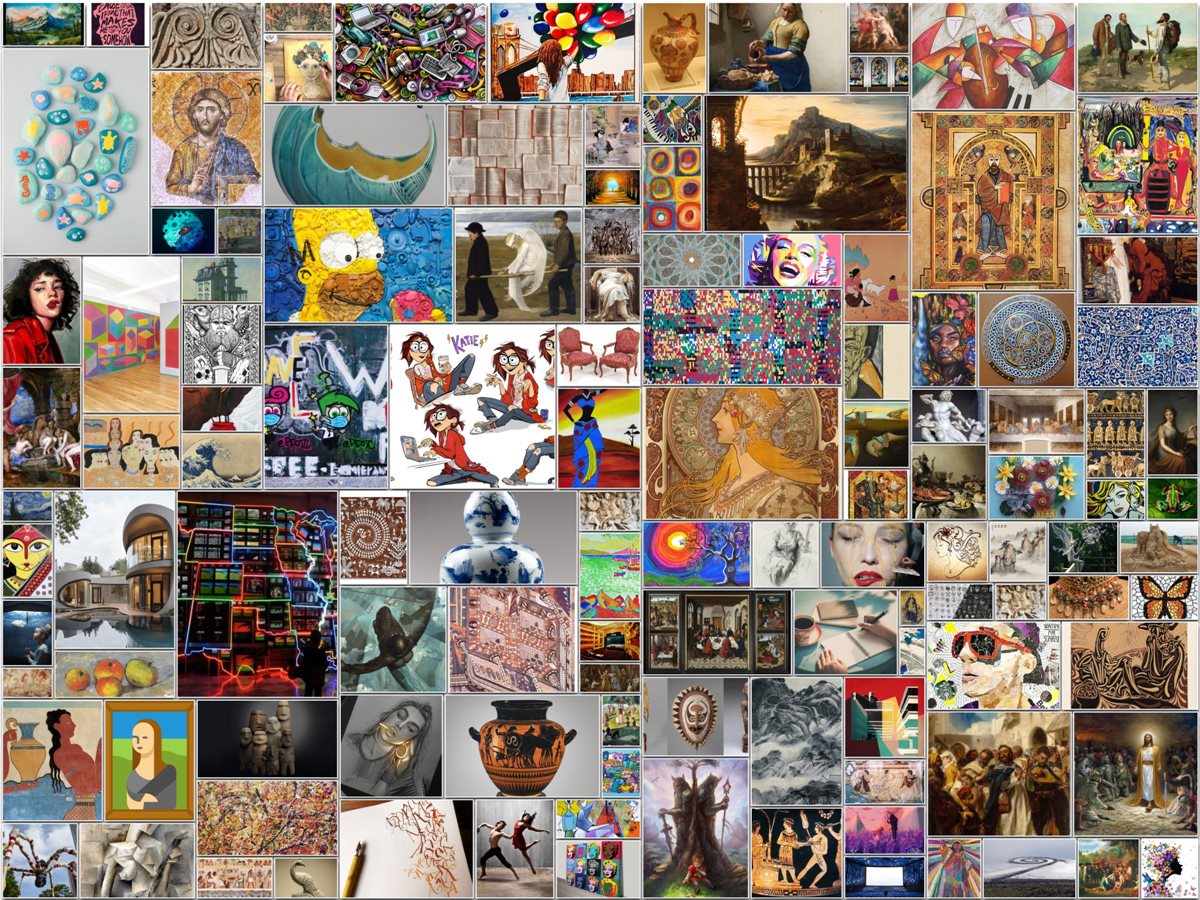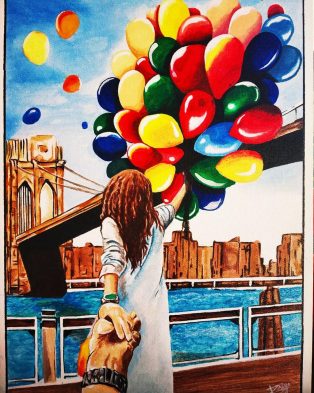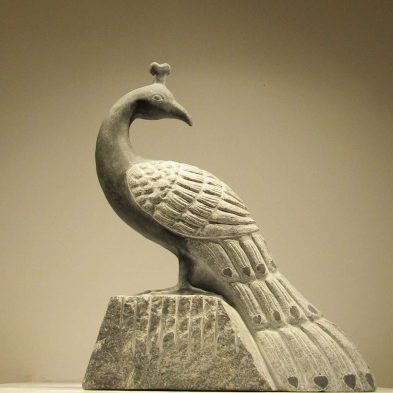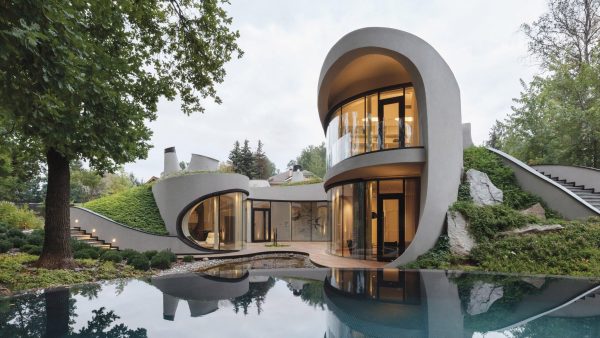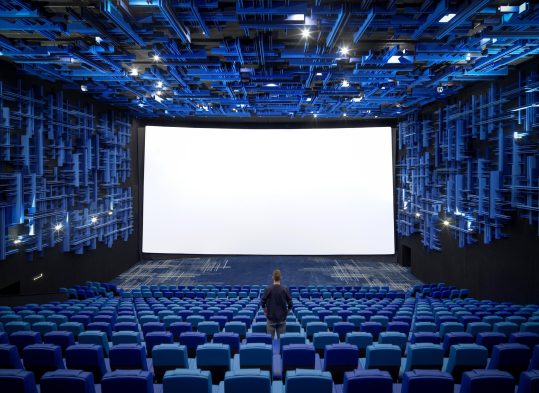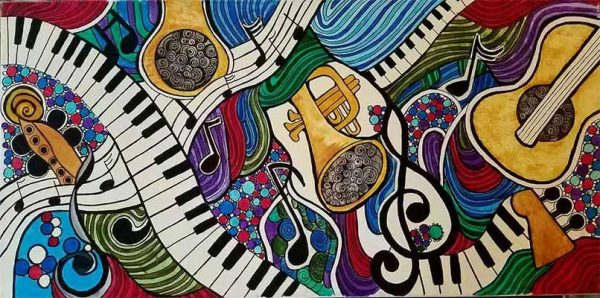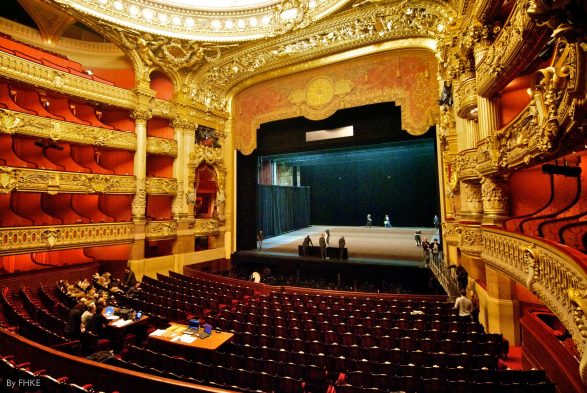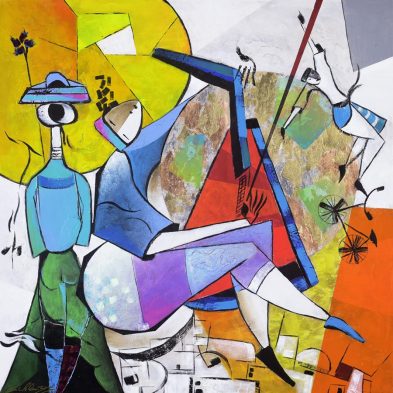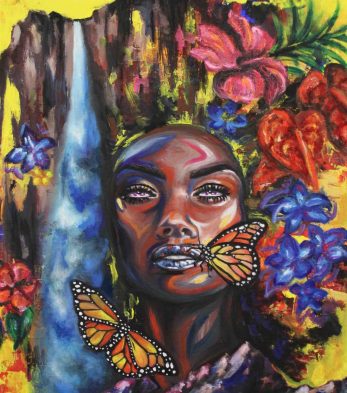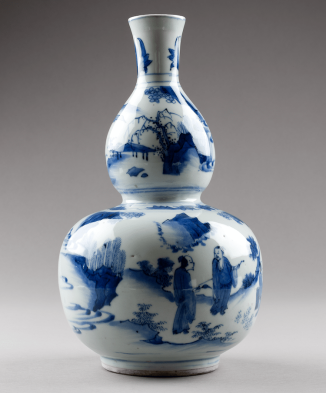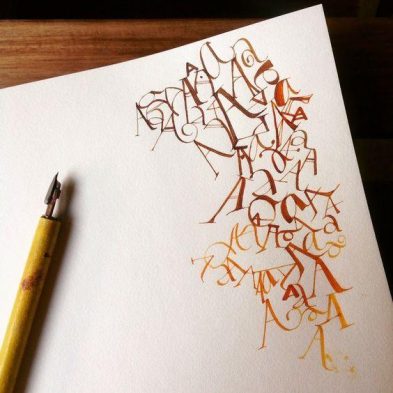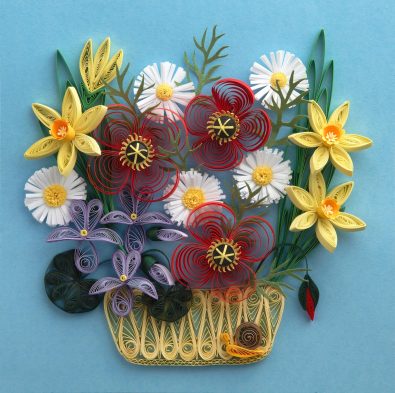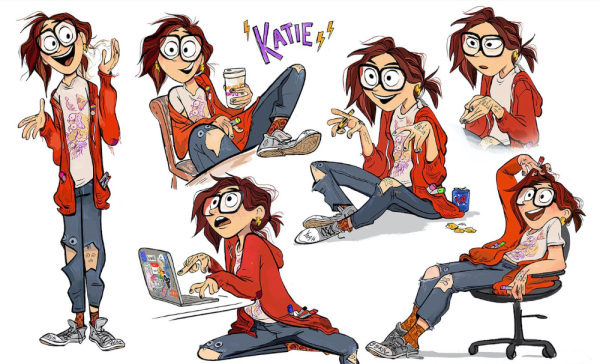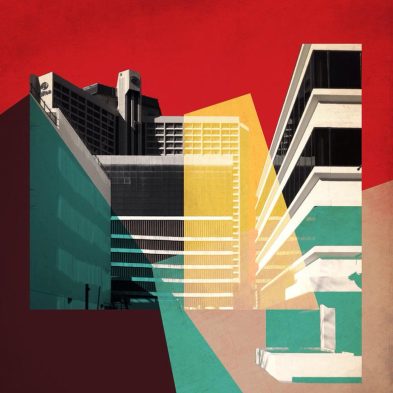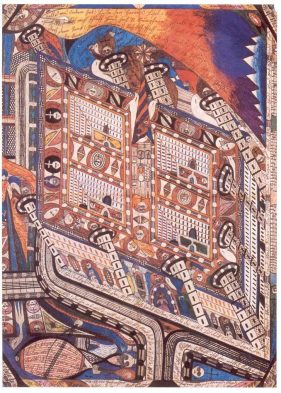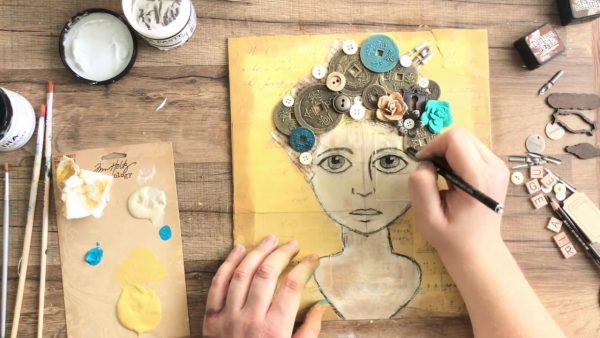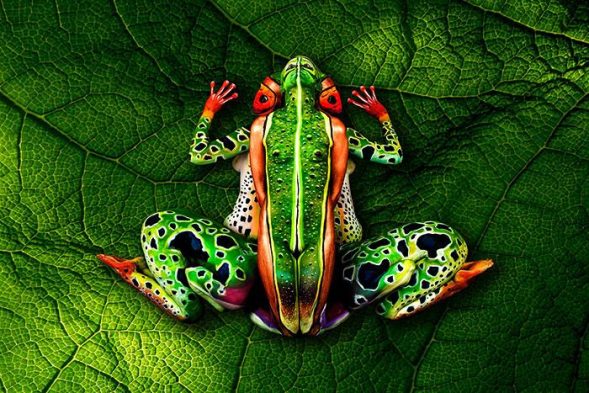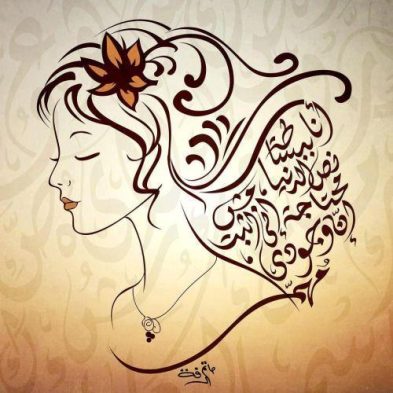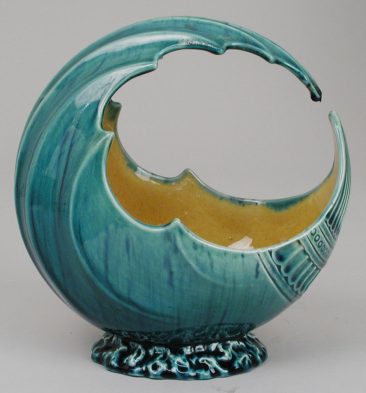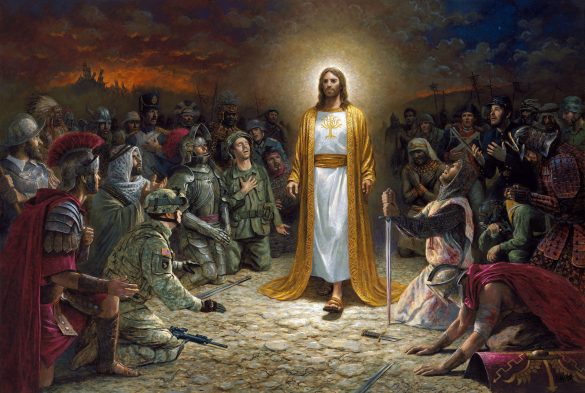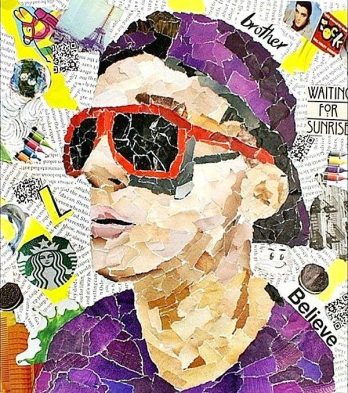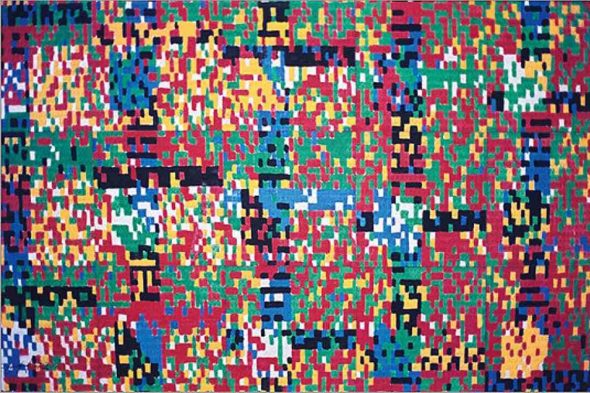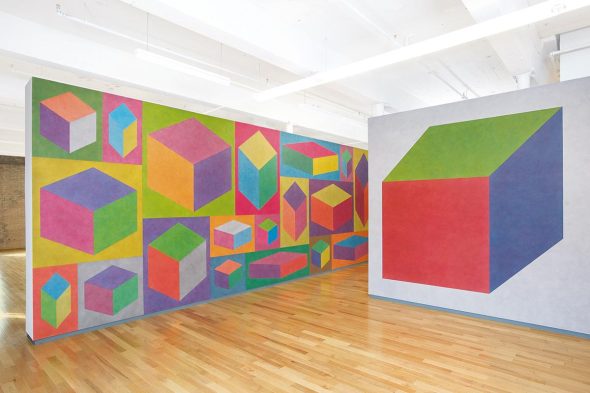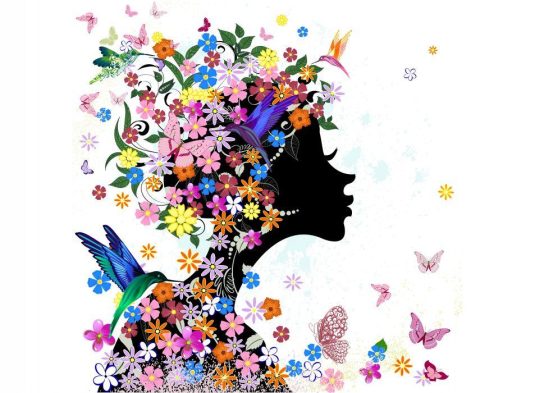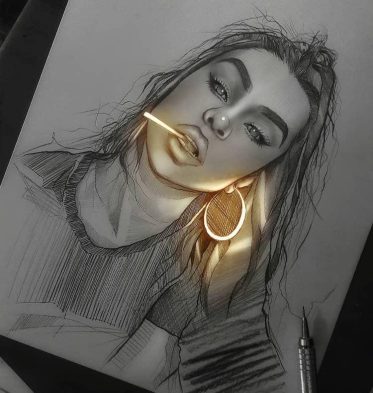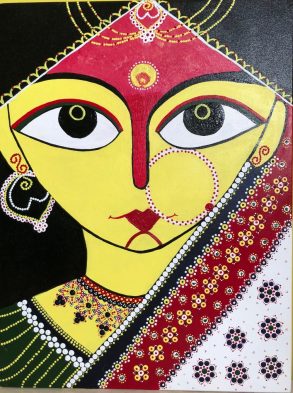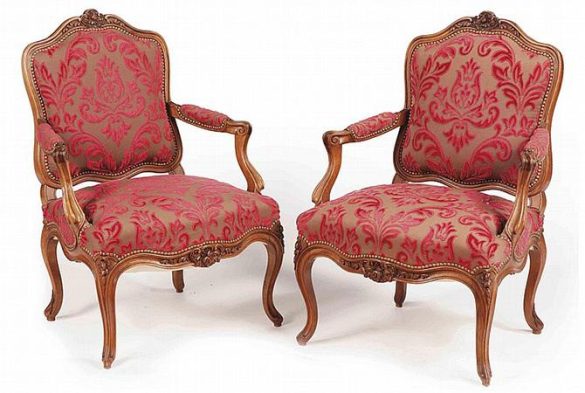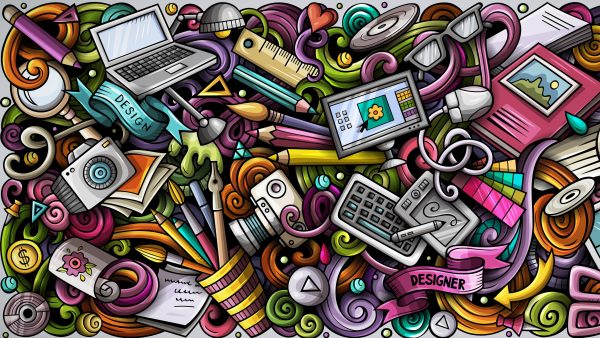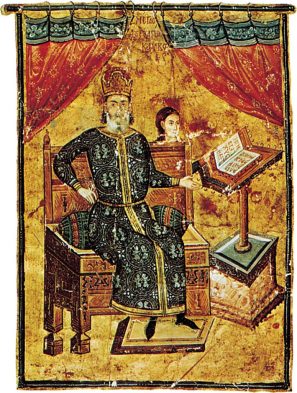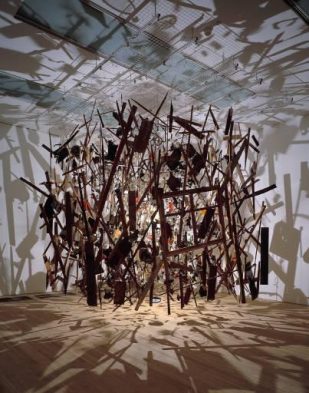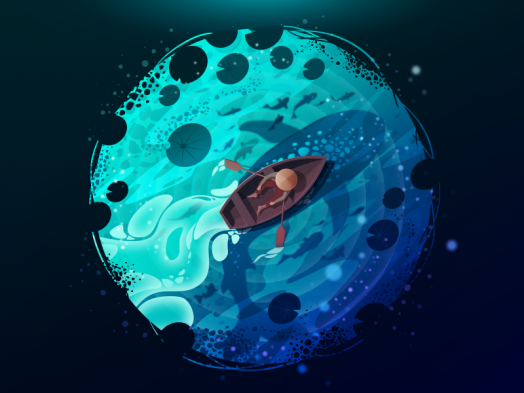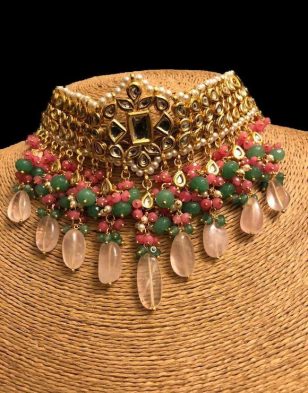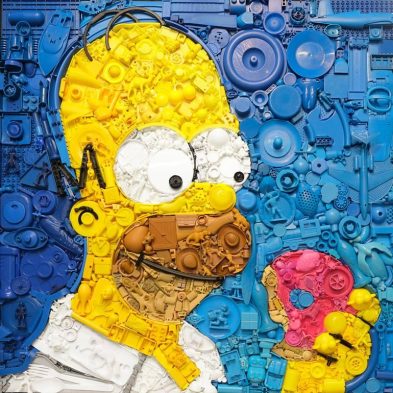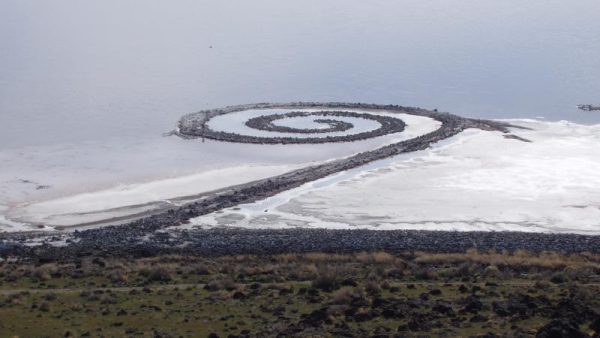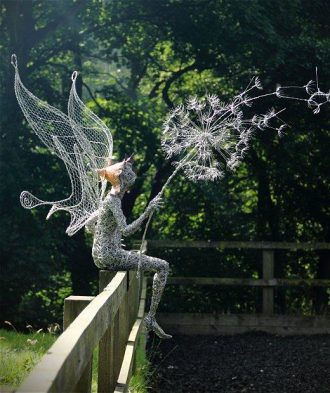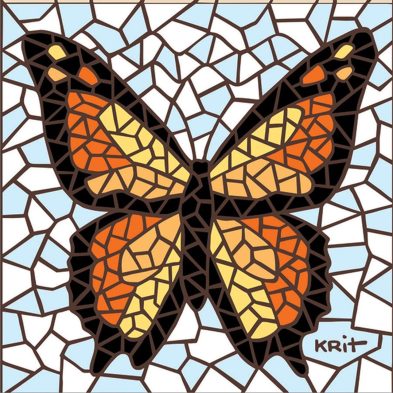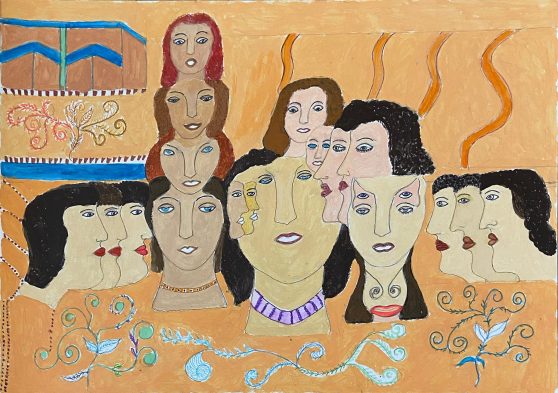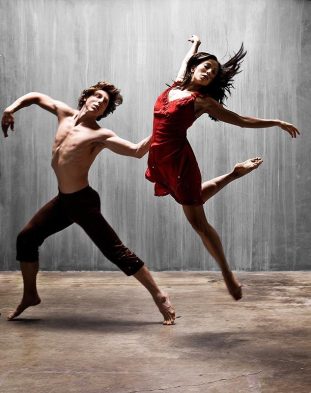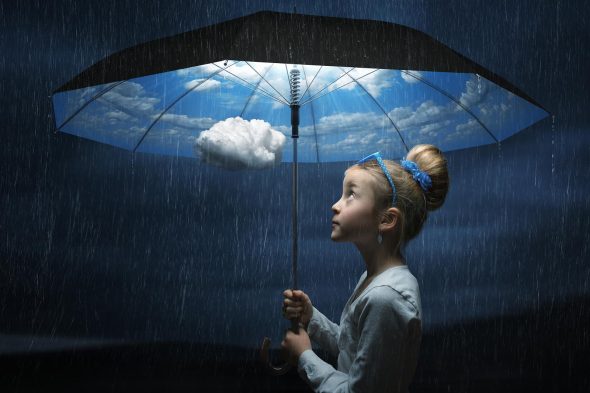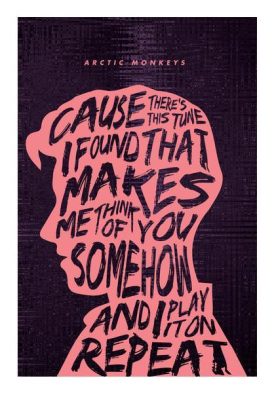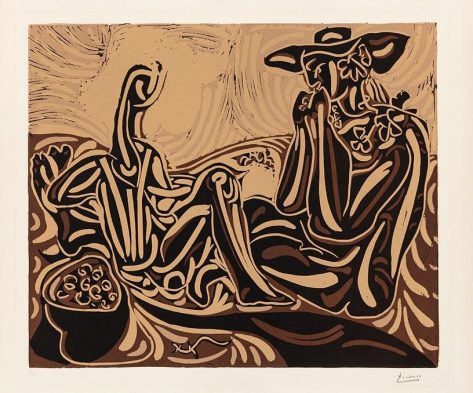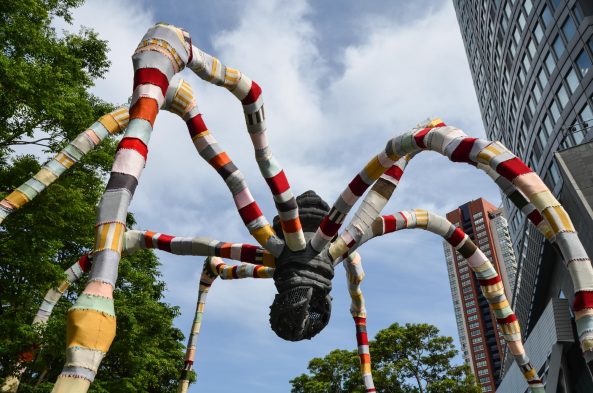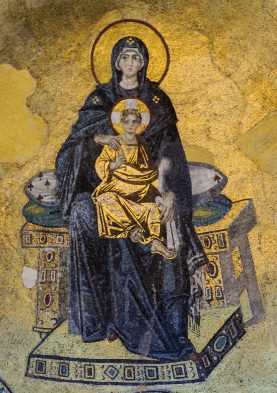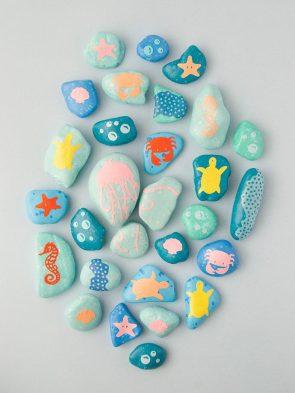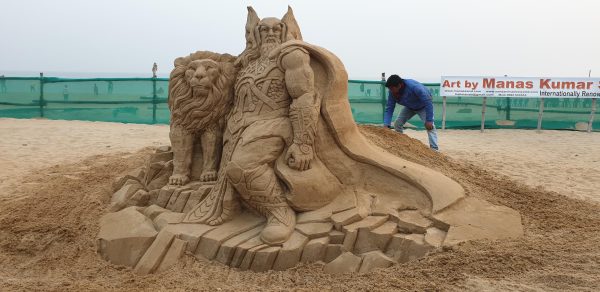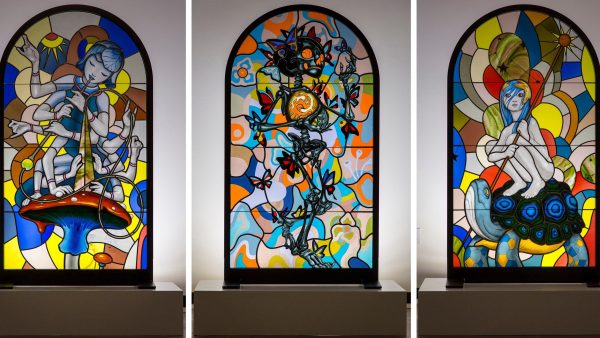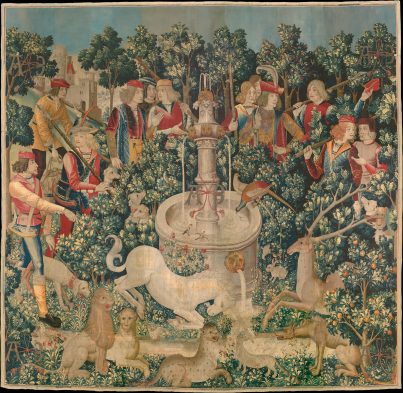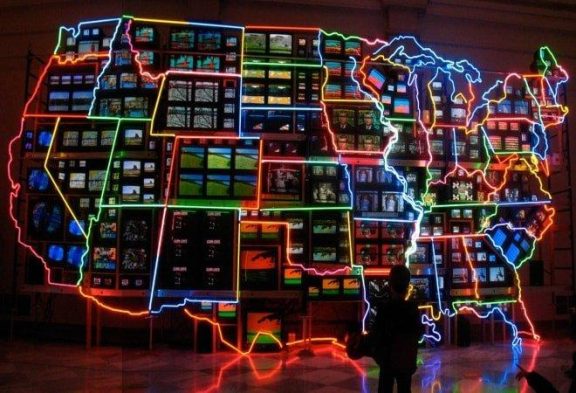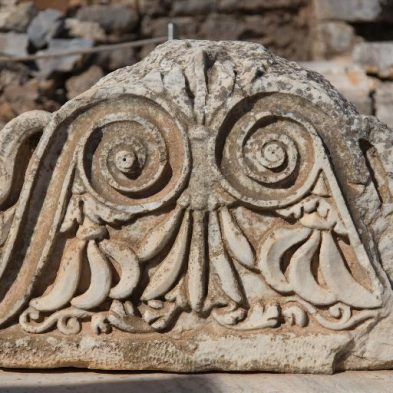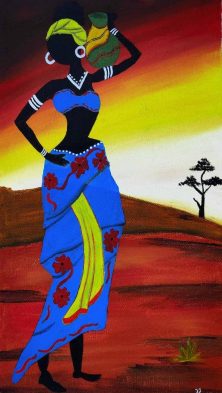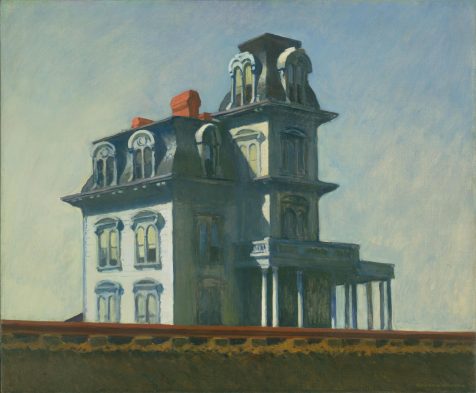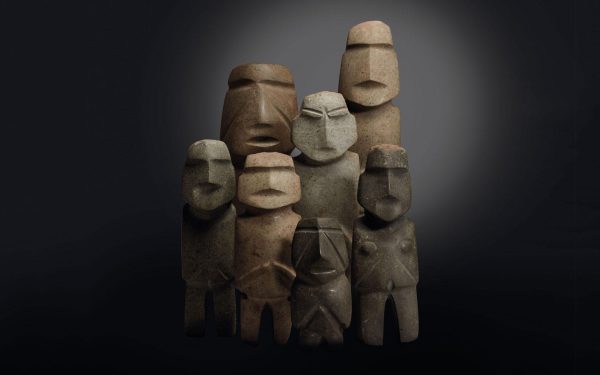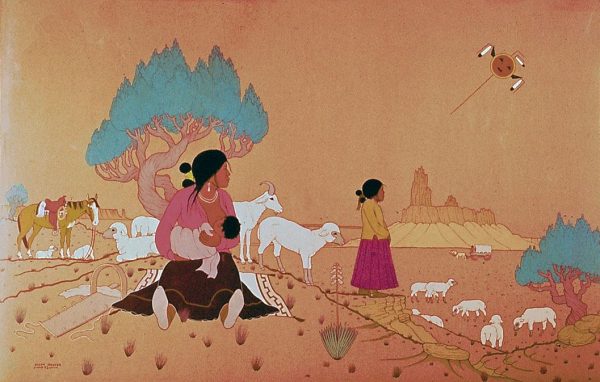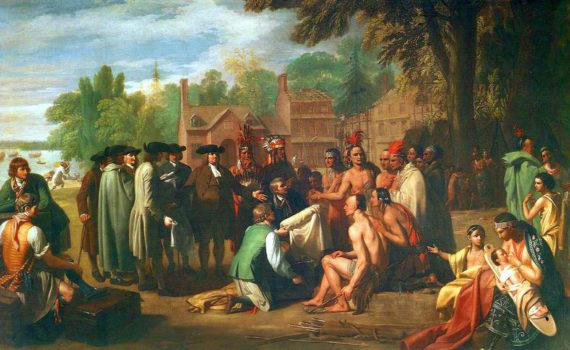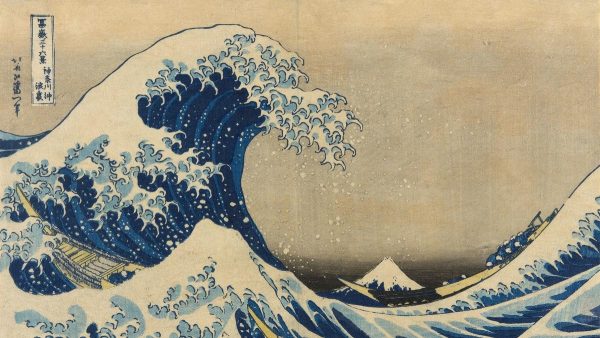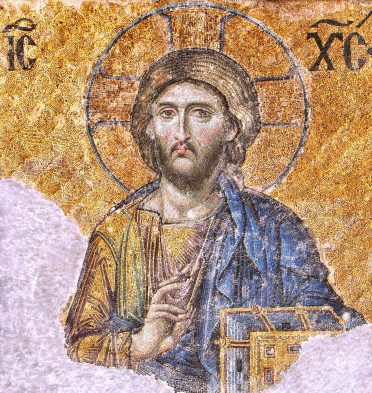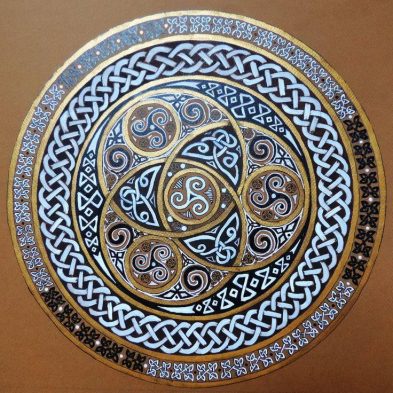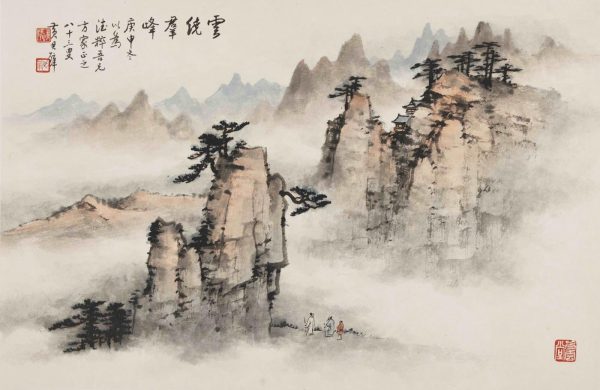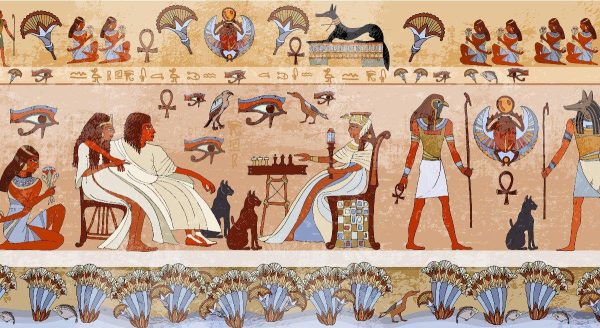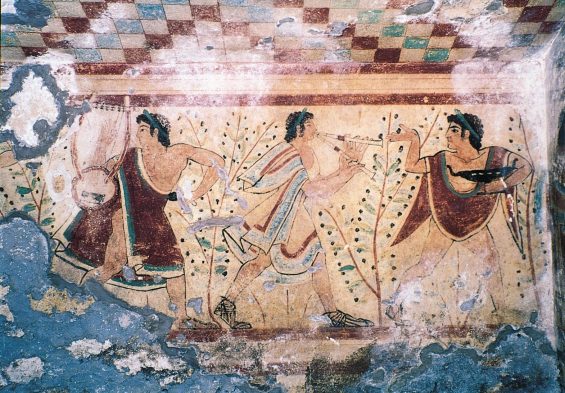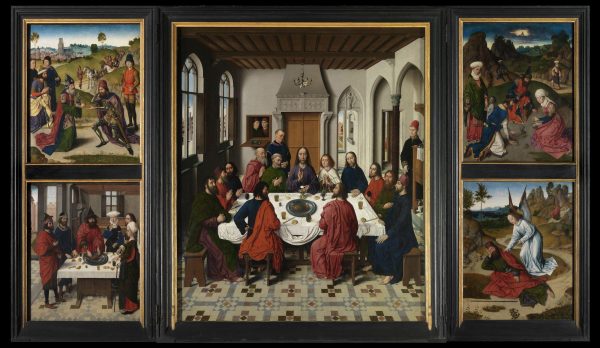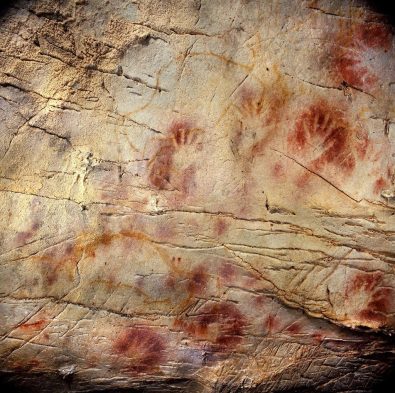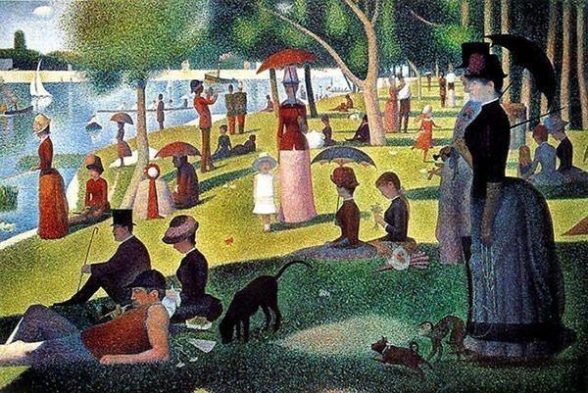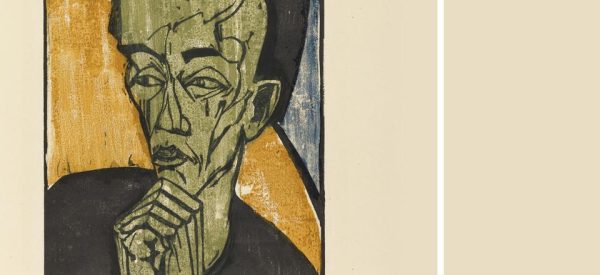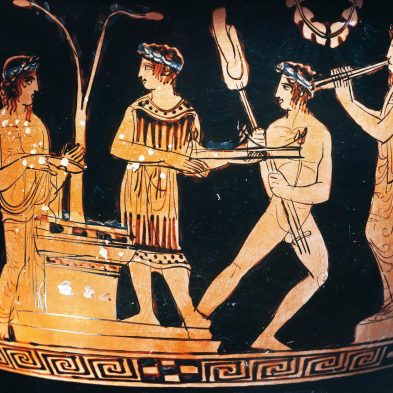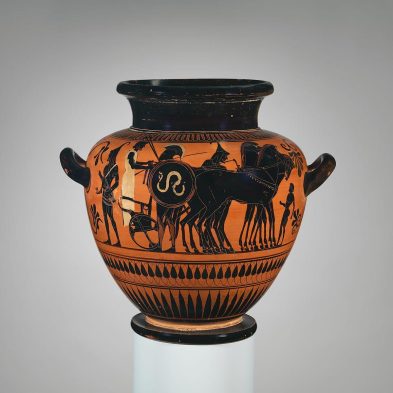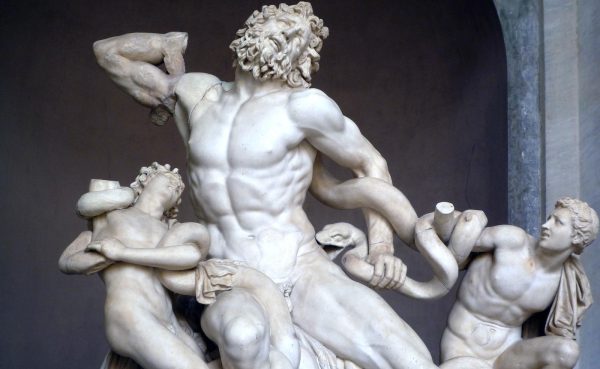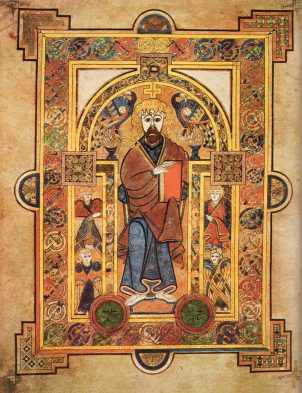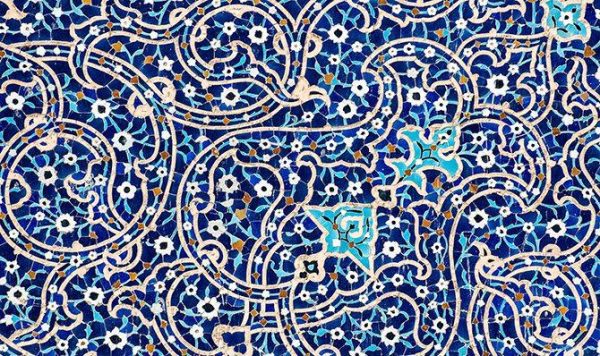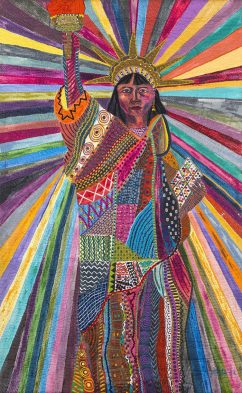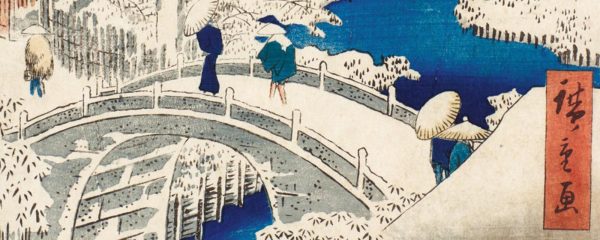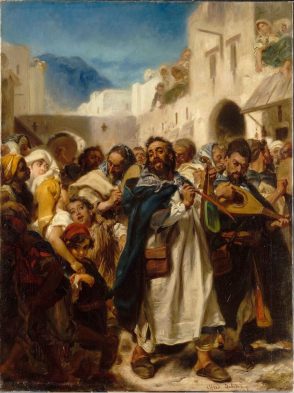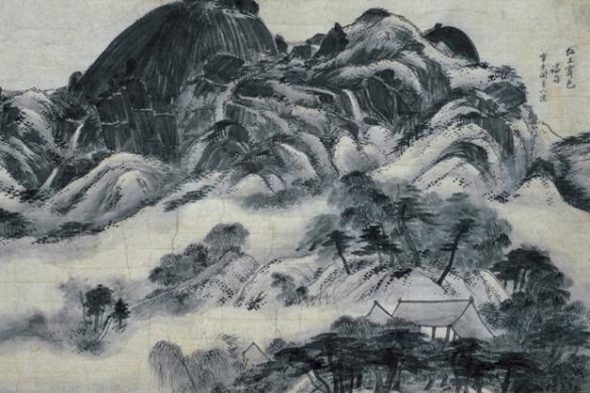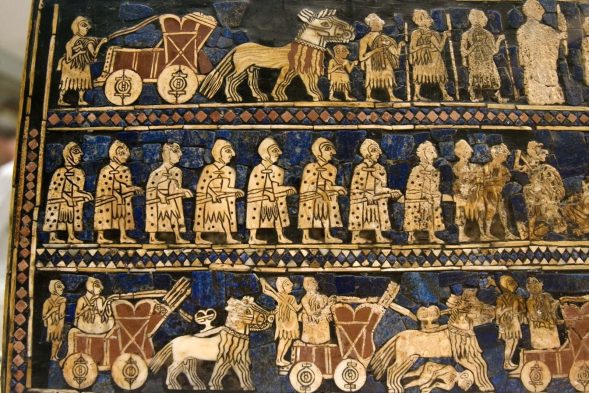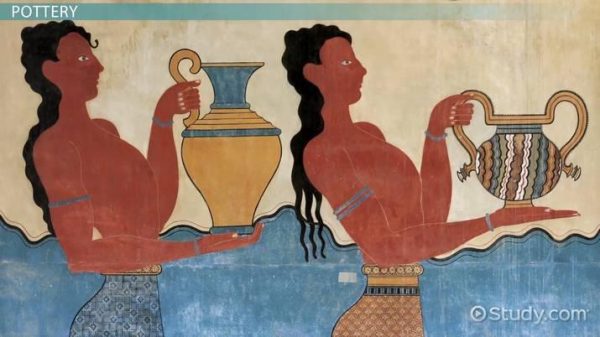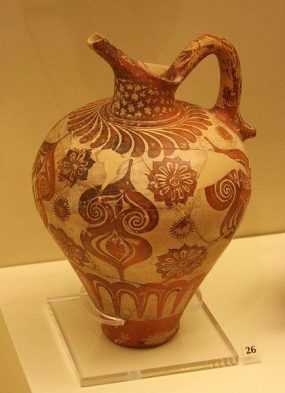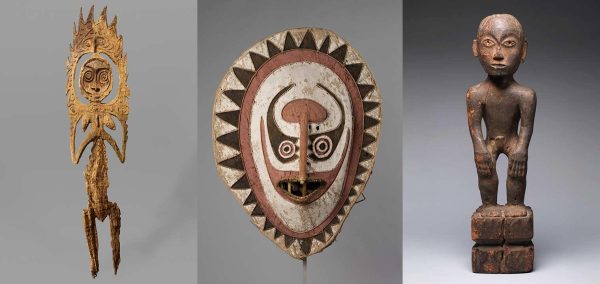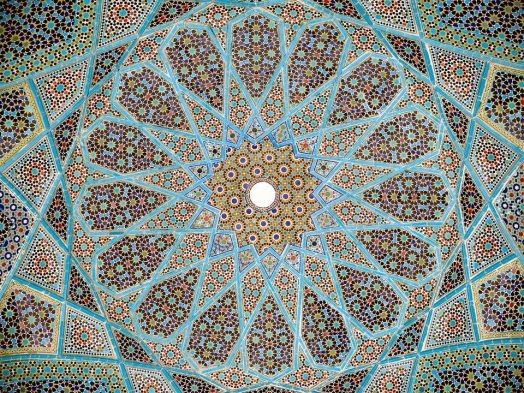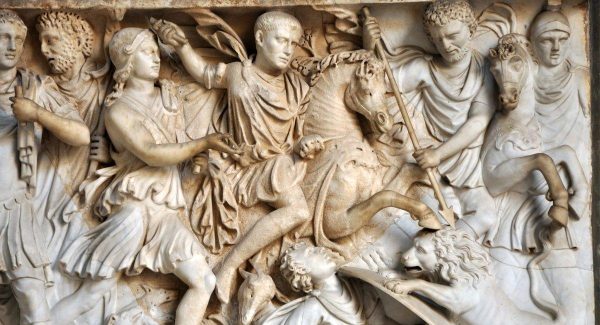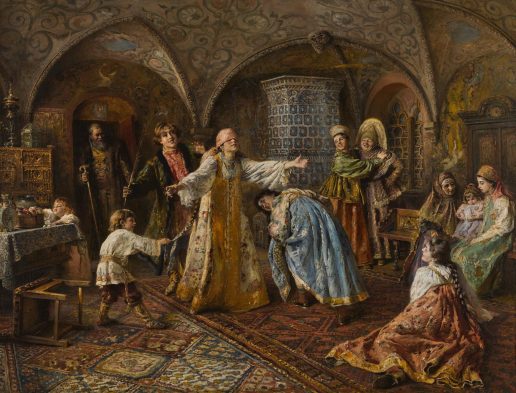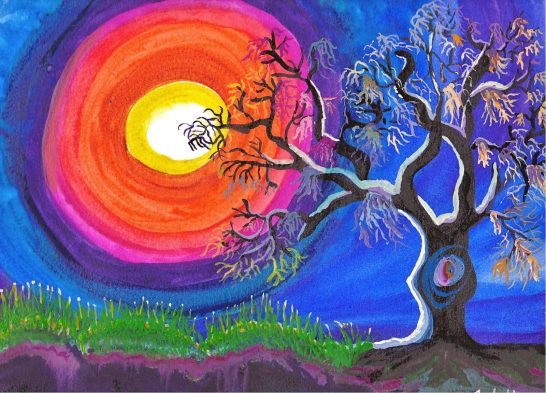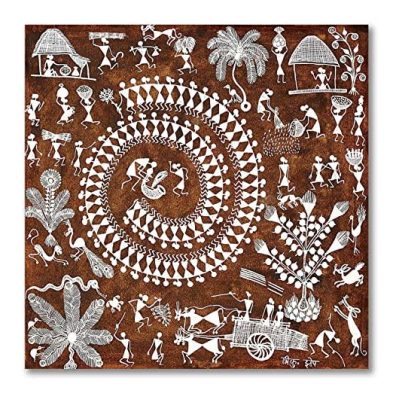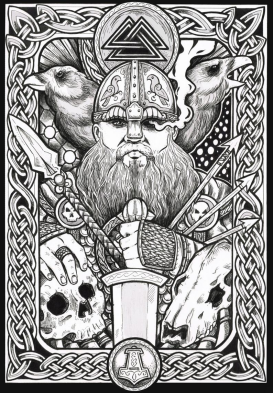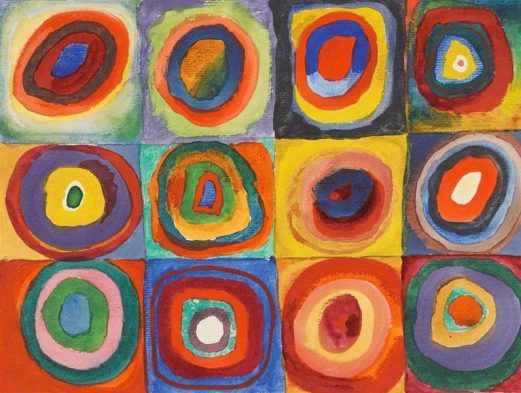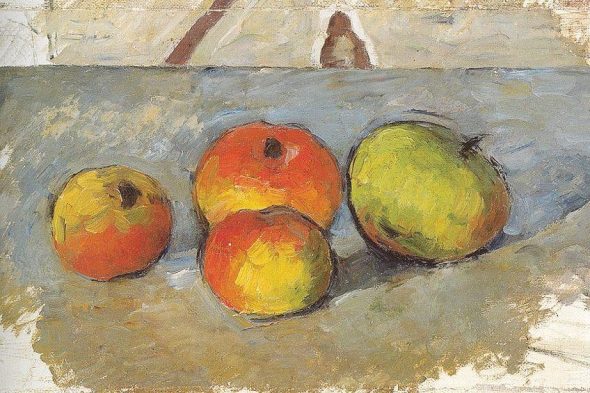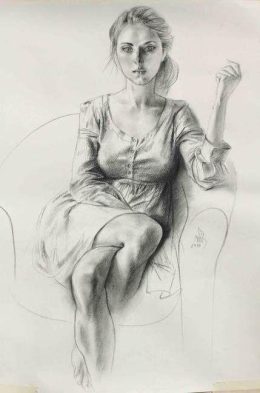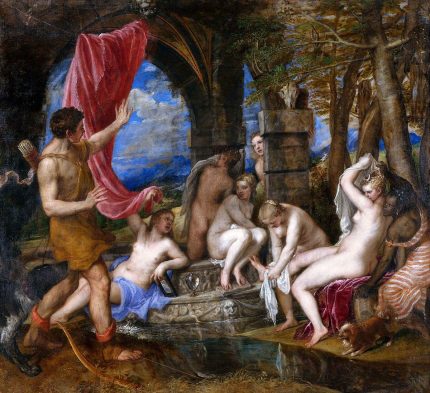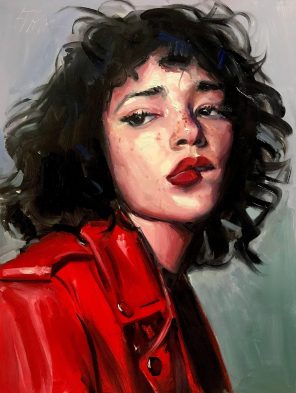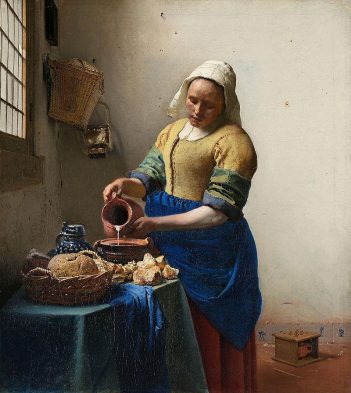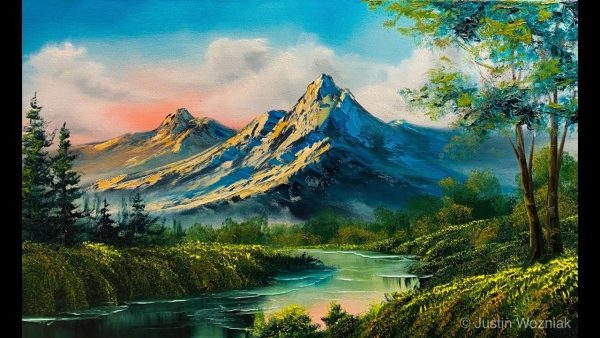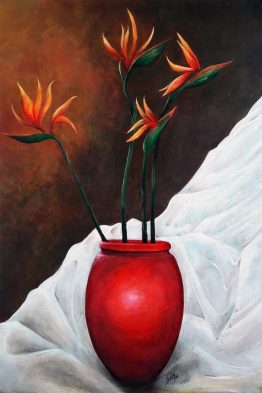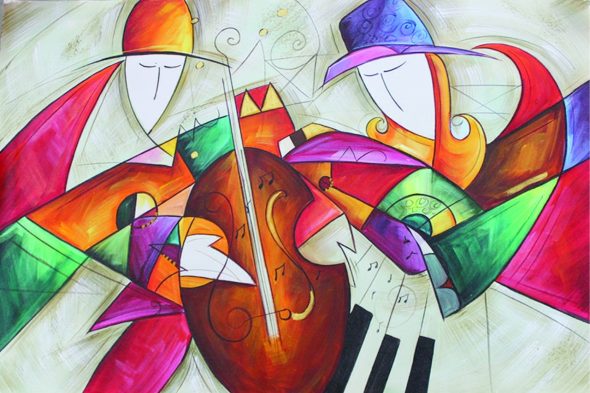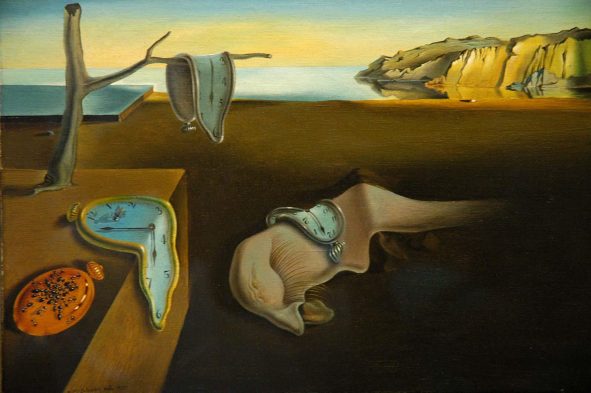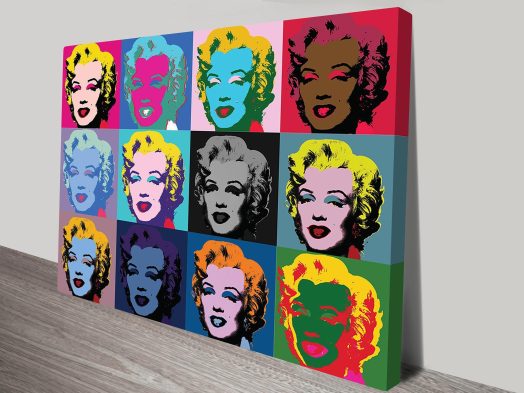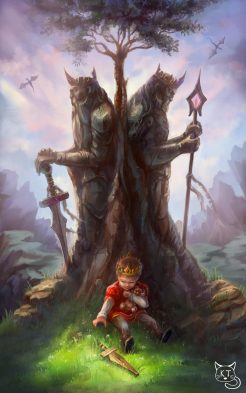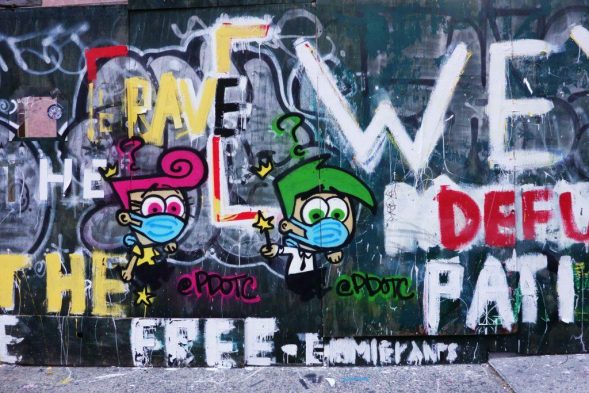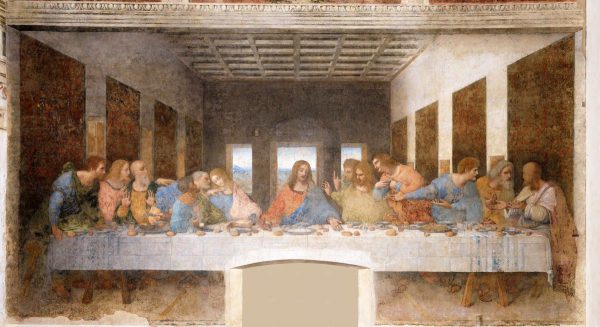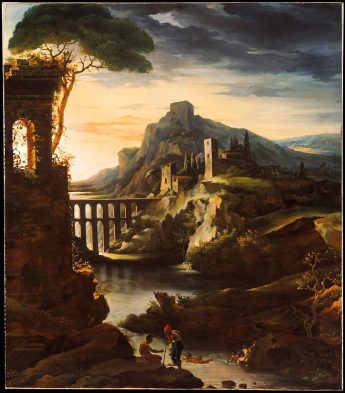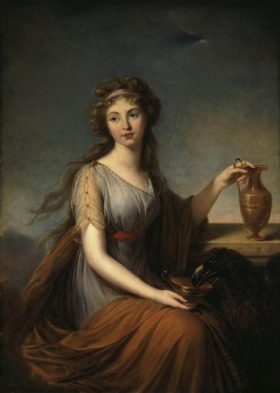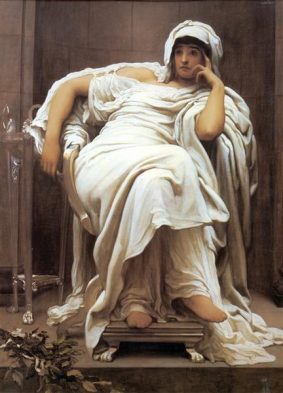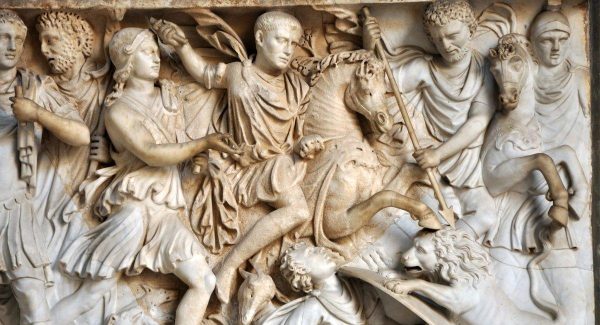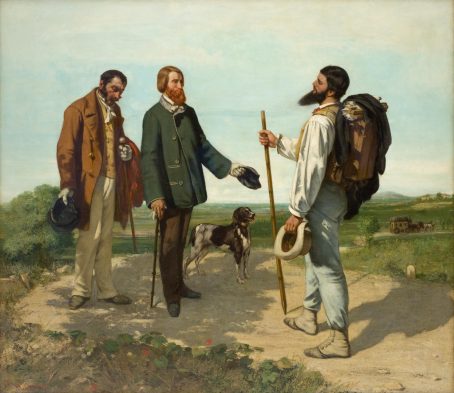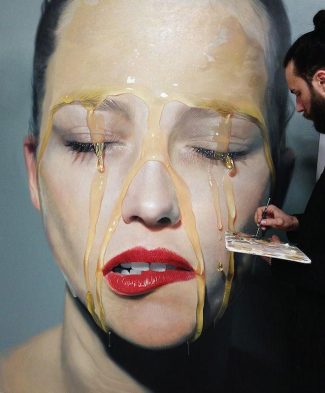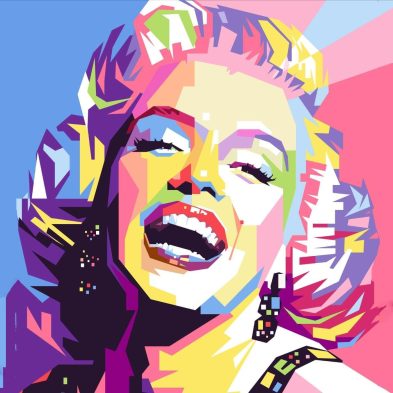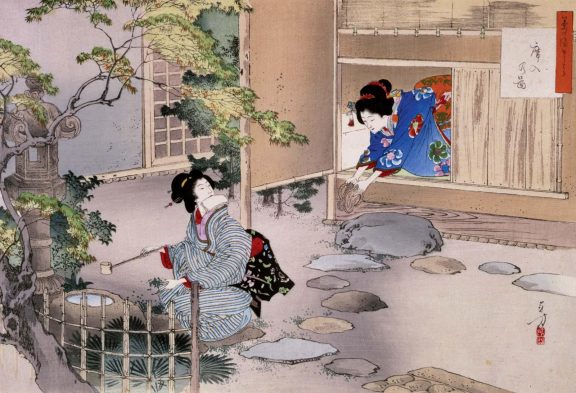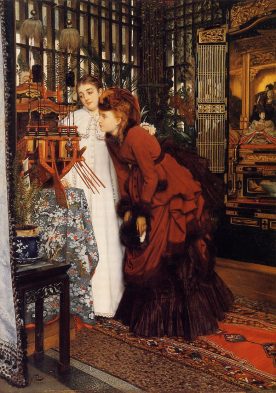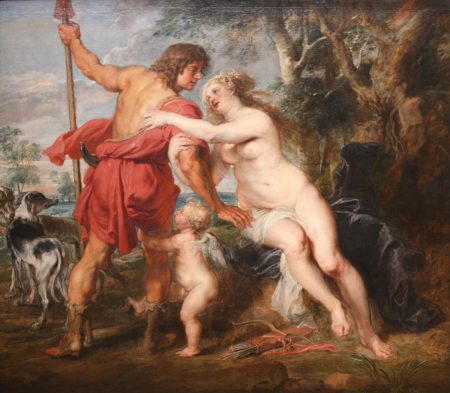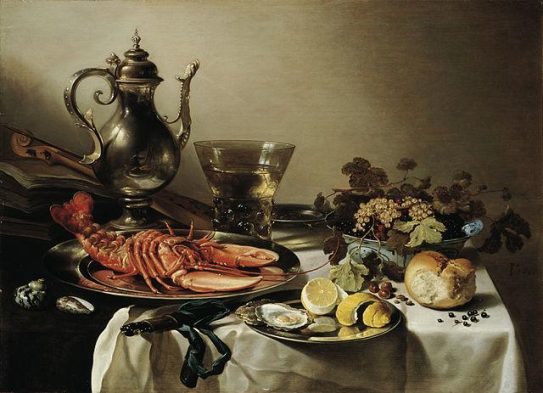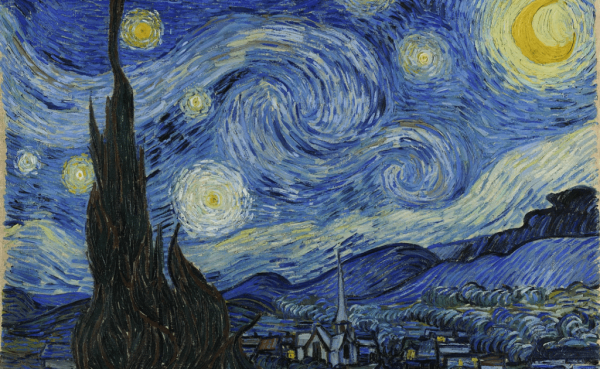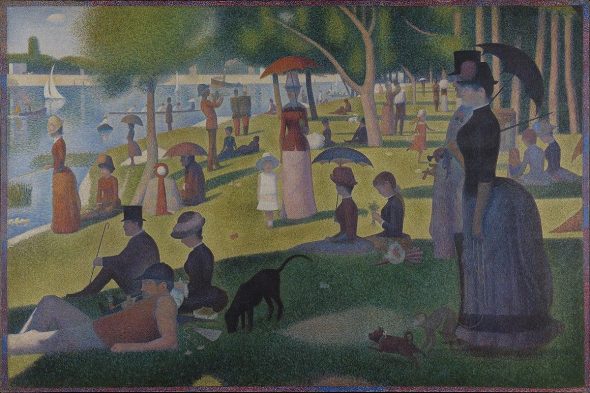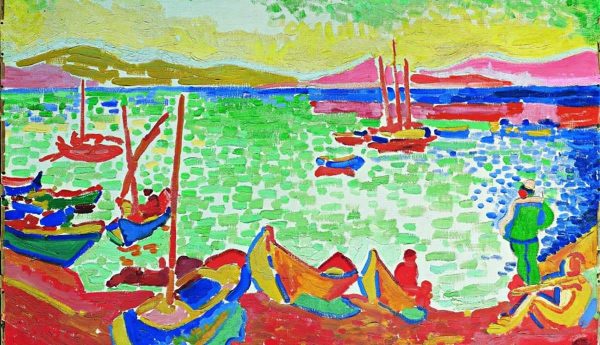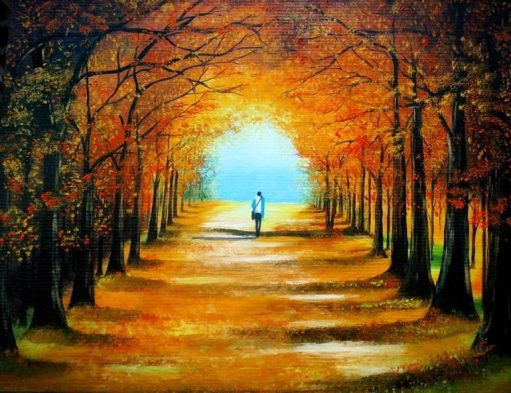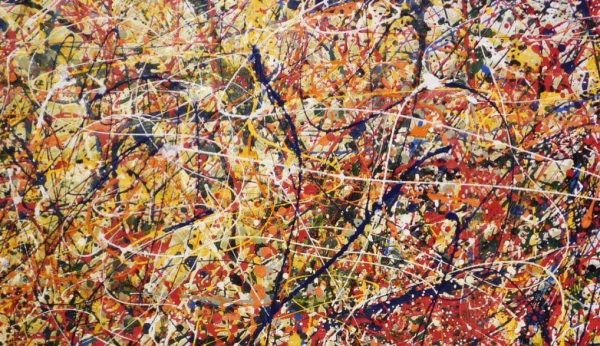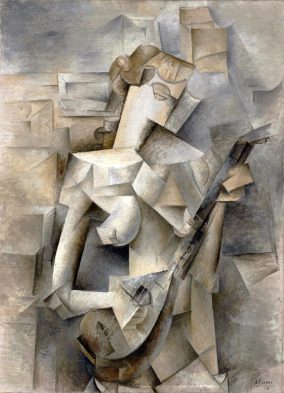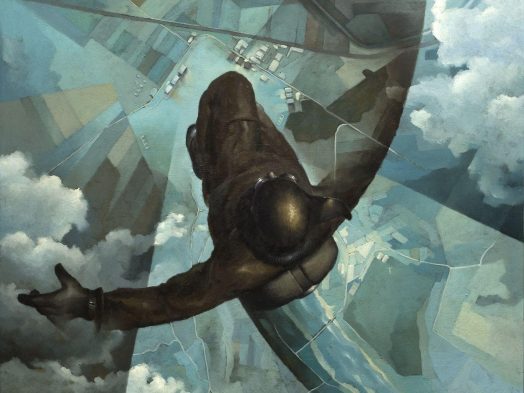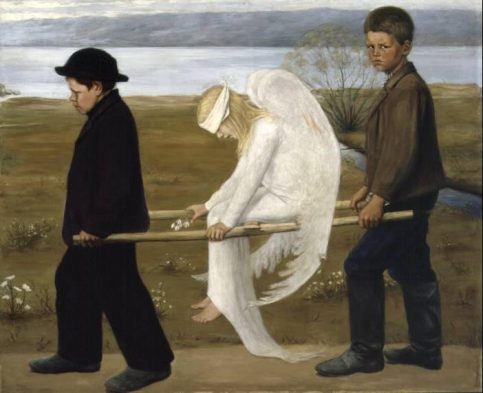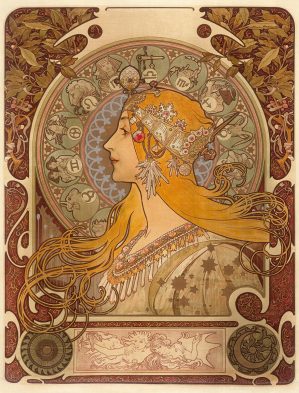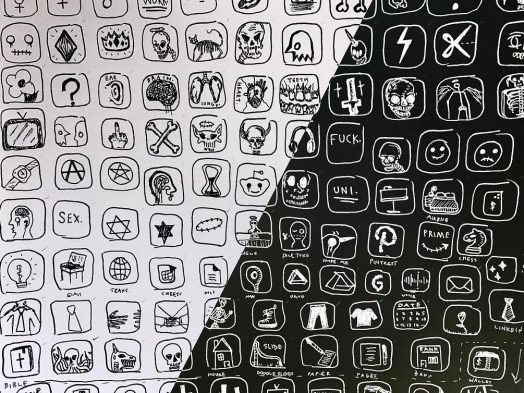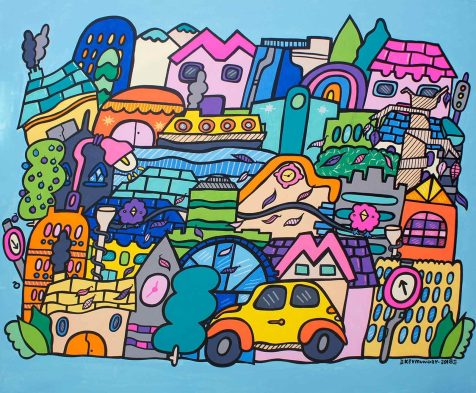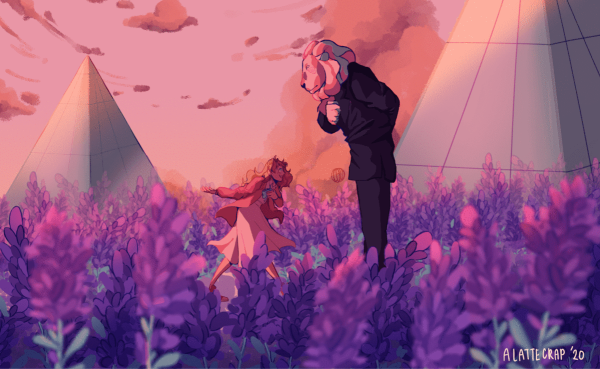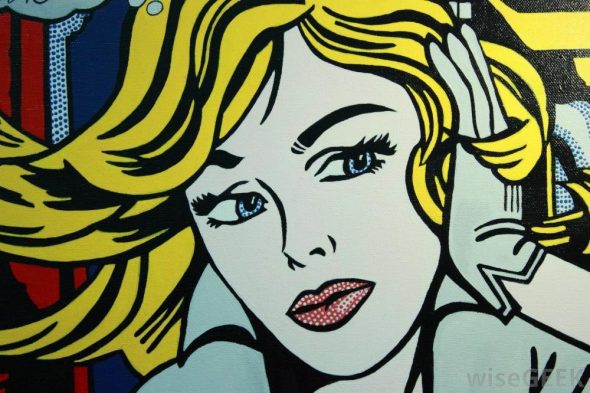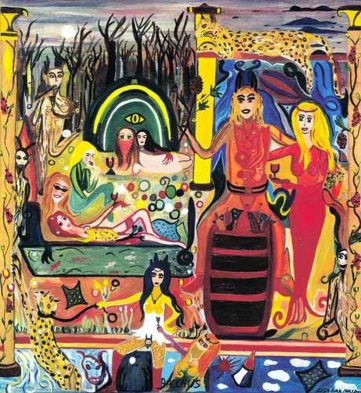Art is a manifestation or application of human creativity, talent, and imagination in any form. Many of the arts are visually seen, but they may also be heard or appreciated through sensory contact. Arts have always been valued for their beauty or emotional impact, but they are now frequently employed for political or social commentary.
The seven distinct types of art we’ll look at in this article may be used to categorise most art. Recognizing and comprehending each of the many types of art not only allows us to appreciate it more, but it also aids us in comprehending the function of the arts in our lives and history.
Specific mediums and styles of creative expression have evolved over time, but art generally fits into one of the seven traditional categories listed below. Each type of art uniquely impacts our emotions and sentiments.
Different Types of Art
Here is the latest list of 129 types of art that you should know about.
1. Painting
When most people think of art, they think of paintings. In childhood education, painting is the most widely taught art media. Alec Monopoly, David Kracov, Yoel Benharrouche, Angelo Accardi, and Calman Shemi are just a few of today’s most well-known modern artists who work in this media.
Painting is a method of expressing your artistic vision with the primary medium of paint. A painter is an artist who works primarily in this medium and creates works of art by putting various colored paints to a solid surface, generally a canvas, to create a work of art. Oil, acrylic, and watercolor paints are common, but you may also use pigments, dyes, and inks, as well as other materials.
Paint can be applied in a variety of ways, including brushing, smearing, dabbing, and splashing. Painting is one of the oldest kinds of art, stretching back to prehistoric cave paintings. Subject matter, style, and genre are all used to categorise paintings. Still life, landscape, seascape, portraiture, and abstract are common painting topics. Modernist, expressionist, classical, surreal, cubist, Chinese style, abstract, impressionist, and many other painting styles exist.
2. Sculpture
Sculpture is an old type of visual art that stretches back to the prehistoric era. A sculpture is a three-dimensional visual picture created with conventional materials like clay, stone, ceramics, metals, or wood.
Michelangelo and Myron, two well-known classical artists, preferred marble and bronze cutting and casting techniques. These materials are used in several of the world’s most well-known sculptures, including “David,” “The Statue of Liberty,” and “Manneken Pis.”
On the other hand, modern sculptors may use practically any item to make a sculpture, including metals, plastics, glass, and found things. Contemporary sculptors now have access to a larger range of skills, including as welding, carving, assembling, and modelling.
Sculptors nowadays, such as Dorit Levinstein, frequently mix sculpture with other media such as acrylic and oil paintings. Gal Yosef (Galy), Eden Gallery’s newest artist, digitally sculpts utilising 3D software tools before turning his idea into a tangible piece of art.
Marcel Duchamp’s ‘Fountain,’ a sculpture consisting of a readymade porcelain urinal, altered the public idea of art and sculpture in 1917. Since then, the concept of what constitutes sculpture has continued to evolve.
Sculptures were the first and oldest kinds of public art in many cultures. Sculptures commissioned by monarchs or religious and political leaders and placed in public locations ” generally as symbols of riches, power, religion, or politics ” were sometimes too large for private residences. Public sculpture collections abound in many classical towns of the ancient world, including Athens, Jerusalem, Istanbul, and Rome.
3. Literature
Literature is a kind of expression that tells tales. It is a literary form that may be read or spoken. “Writings whose worth depends in the beauty of form or emotional effect,” according to the Concise Oxford Dictionary. Literature covers a vast range of written works, including poetry, essays, plays, biographies, fiction, non-fiction, satires, and more, and spans all written languages.
Writers make art with literature by arranging words in a pleasing order, and while reading is pleasurable, those words are frequently social criticisms. Many well-known authors, such as George Orwell, Charlotte Bronte, and Charles Dickens, used language and the written word to criticise or provide a point of view on society.
While literature is a distinct art form and one of the seven types of art, it is also strongly linked to theater, poetry, cinema, music, and the spoken word.
4. Architecture
Architecture is an art form that you see every day without recognising it or enjoying it completely. Architecture is the art of building structures, and it can be traced all the way back to when man first built a shelter. The more widespread notion of architecture as an art form, on the other hand, is limited to a small number of extremely beautiful or awe-inspiring structures.
The Great Pyramids, Rome’s Coliseum, the Taj Mahal, Hagia Sophia, and Stonehenge are examples of ancient architectural marvels. The Eiffel Tower, Sagrada Famlia, Sydney Opera House, Louvre, Burj Khalifa, and Guggenheim Museum are examples of modern architectural marvels.
Architecture provides a practical purpose, but it also represents man’s ambition to construct significant buildings throughout history. Architecture is both a practical need and a work of art, and it is accessible to the public as sculpture.
Many of the world’s most well-known architectural achievements may be found in major cities across the world. Famous modern architects like Frank Lloyd Wright and Frank Gehry, on the other hand, have worked on private house projects. It’s possible that some art can be found on your own street.
5. Cinema
Cinema is the most recent of the seven art genres. Cinema, which was founded little over a century ago, may not have as long a history as the other art forms on our list, but it has swiftly grown in popularity.
Movies are a two-dimensional representation of a three-dimensional reality, an art form that involves both our aural and visual senses. Movies, like literature, convey a storey through a combination of spoken word, visual art, and other elements.
Cinema has swiftly grown into the multibillion-dollar industry that it is today. Special effects, animation, makeup, costumes, screenplay, scene design, music, acting, directing, and other aspects of the film business employ craftsmen. The other seven main genres of art described in this article encompass many of these artistic professions. Every film production requires a diverse spectrum of creative vision and expertise.
Despite the fact that cinematic art creation necessitates a large number of talented artisans, the master artist is frequently referred to as the director. Stanley Kubrik, Alfred Hitchcock, George Lucas, and Akira Kurosawa are among the most well-known directors of all time.
While cinema is not often regarded as a great art form in the same way that some of the classic forms are, it is without a doubt one of the most accessible and popular art forms of the contemporary period.
6. Music
Music is the art of utilizing melody, harmony, rhythm, and timbre to create a musical composition from audible sounds and vibrations. The human voice, instruments, or both can be used in music.
Music is a culturally universal art form that may be found in all human cultures across the world. Music has significant religious connotations and is an integral element of many religious rituals. When the sounds generated by the vocal chords and other instruments are blended, the beauty of emotion may be expressed.
Music is more difficult to date than the visual arts, although vocal sounds are thought to have played an important part in early human communication before the emergence of speech. According to archaeological data, our forefathers made musical instruments out of wood, bones, stones, and other natural elements.
Modern artists have access to a wide range of musical instruments in addition to their voices to make music. Music is divided into genres and styles, and there are far too many to mention. Classical through gospel, rock, pop, hip-hop, rap, electronic, blues, country, reggae, indie, trap, reggaeton, folk, metal, punk, soul, funk, techno, and more are all popular western music genres.
7. Theater
Theater is a kind of art in which the creator incorporates both visual and dramatic elements. The concept of theater has evolved throughout time to encompass performance art. It often encompasses a variety of art genres in which the artist or artists exhibit or perform their work on a stage.
Since the 6th century BC, when the Ancient Greeks invented theater, it has been a component of civilization. Since then, theater has grown in popularity as a popular form of entertainment. Theater and dance, music, opera, circus arts, musicals, magic or illusion, mime, spoken word, puppets, and performance art are all examples of the performing arts. Many current plays adhere to the ancient Greek theatrical divisions of drama, tragedy, and comedy.
Theater frequently combines the other seven forms of art into its overall package, with aspects such as music, stage design, and literature being employed in theater productions. Costume creation and other ornamental arts also contribute to the entire experience. Theater performances have also taken place in some of history’s most awe-inspiring architectural settings, including Pompei and other famed ancient Greek and Roman amphitheaters.
A wide range of performers has influenced theater works. Playwrights like William Shakespeare, composers like Andrew Lloyd Webber, and directors and actors like Lee Strasberg, Laurence Olivier, and Julie Andrews are all well-known theater performers.
8. Fine Art
Drawing, painting, sculpture, and printing are all included.
9. Visual Art
Fine arts, contemporary arts (e.g. installation, performance), and decorative arts are all included.
10. Decorative Art
Crafts is a broad term that encompasses a wide range of activities. Arts and Crafts Movement is another term for the arts and crafts movement.
11. Applied Art
Architecture, industrial design, fashion/furniture design, interior design, and so on are all included.
12. Crafts Art
Decorative arts is a broad term that encompasses a wide range of disciplines. Also see: Feminist Art (1970s).
13. Art Glossary
All basic terms are explained.
14. Animation Art
Animation is the visual art of generating a motion image from a sequence of still drawings, derived from the Latin meaning “to breathe life into.” J. Stuart Blackton, George McManus, Max Fleischer, and Walt Disney are among the finest animators of the twentieth century.
15. Architecture Art
Building design is best understood as an applied art. Architectural styles such as Gothic, Baroque, and Neoclassical have profoundly impacted the development of fine art throughout history.
16. Art Brut
Painting, sketching, and sculpting by marginalized artists, such as those in mental institutions or youngsters.
17. Assemblage Art
A contemporary type of sculpture similar to collage in which a piece of art is constructed or “assembled” from three-dimensional elements, usually “found” things.
18. Body Art
Body and face painting, as well as tattoos, mime, “living statues,” and (most recently) “performances” by artists such as Marina Abramovic and Carole Schneemann, are among the oldest (and newest) forms.
19. Calligraphy Art
The Chinese view this exquisite art, which is extensively practiced in the Far East and among Islamic artists, as the highest form of art.
20. Ceramics Art
Ceramics is a kind of plastic art that consists of things made of clay and fired in a kiln. Below are examples of ancient Chinese and Greek pottery. Bernard Howell Leach (1887-1979), an English artist, and Camille Le Tallec, a Frenchman, are two of the most prominent European ceramicists (1908-91).
21. Christian Art
The majority of this is Biblical Art, or works inspired by the Bible. It contains art from the Protestant Reformation, the Catholic Counter-Reformation, and Jewish themes. Early Christian sculpture and Early Christian art are also worth looking at.
22. Collage Art
Newspaper clippings, cardboard, photographs, textiles, and other items are adhered to a board or canvas in this composition. It’s possible to mix it with painting or sketching.
23. Computer Art
Computer-controlled types of fine or applied art and all computer-generated forms of fine or applied art. Digital, Cybernetic, and Internet art are other terms for the same thing.
24. Conceptual Art
A modern art genre in which the concept or idea behind a work of art takes precedence over the work itself. Allan Kaprow (b.1927) and Joseph Beuys (1921-86), the former Professor of Monumental Sculpture at the Dusseldorf Academy, whose commitment earned him a retrospective at the Samuel R Guggenheim Museum, are two leading conceptual artists (New York).
25. Design (Artistic) Art
This is the strategy for making anything that adheres to a set of aesthetics. Art Nouveau, Art Deco, De Stijl, Bauhaus, Ulm Design School, and Postmodernism are examples of artistic design movements.
26. Drawing Art
A drawing might be a finished piece or a preliminary sketch for a painting or sculpture. The relative importance of drawing (line) vs color is a key problem in fine art.
27. Folk Art
Rural artists mostly create crafts and utilitarian applied arts.
28. French Furniture Art
The best furniture was made by French designers at the Royal Court in the Louis Quatorze, Quinze, and Seize styles throughout the 17th and 18th centuries. See French Decorative Arts for a quick overview (1640-1792).
29. Graffiti Art
In the late 1960s and early 1970s, street aerosol spray painting became popular in East Coast American cities. Jean-Michel Basquiat (1960-1988), Keith Haring (1958-1990), and Banksy are among well-known graffiti artists.
30. Graphic Art
Color is less important in visual expression than line and tone (disegno) (colorito). Drawing, cartoons, caricature art, comic strips, illustration, animation, and calligraphy, as well as conventional printing, are all included. Also included are postmodernist word art forms (text-based graphics).
31. Icon Painting Art
The most popular kind of Eastern Orthodox ecclesiastical art, beside mosaic art. Byzantine art and subsequent Russian icon artists are closely linked.
32. Illuminated Manuscripts Art
The Book of Kells is an example of religious scriptures (Christian, Islamic, and Jewish) decorated with figurative images and/or abstract geometric patterns.
33. Installation Art
A new type of contemporary art that uses a variety of 2-D and 3-D materials to create a specific place that is intended to have an impression on the spectator or visitor. Damien Hirst, the Turner Prize winner, and Tracey Emin are well-known installation artists.
34. Illustration Art
A type of painting, drawing, or other visual art that clarifies, illustrates, or embellishes textual language.
35. Jewellery Art
Goldsmiths and other skilled artisans such as silversmiths, gemologists, diamond cutters/setters, and lapidaries practise this technique.
36. Junk Art
Found objects, of which Marcel Duchamp’s “readymades” are a sub-category, are artworks made from common, everyday items. Sculpture, assemblage, collage, and installations are examples of 3-D works.
37. Land Art
Earth art, also known as earthworks or Environmental art, is a relatively new type of contemporary art that arose in America during the 1960s as a reaction against the commercial art industry, pioneered by Robert Smithson (1938-73).
38. Metalwork Art
Encompasses goldsmithing, which is the process of turning precious metals into works of art and enamelwork methods such as cloisonné, plique-a-jour, champlevé, and encrusted enamelling. See Celtic Metalwork for further information. See also Fabergé Easter Eggs for additional contemporary creations.
39. Mosaic Art
An ancient art style that uses glass tesserae to create visual designs. It was invented by Ancient Greek and Byzantine painters. See Ravenna Mosaics (c.400-600) and Christian Byzantine Art for examples of its heyday throughout the Middle Ages (c.400-1200).
40. Outsider Art
Paintings and sculptures by artists and sculptors who are not part of the mainstream culture; they may be mentally ill or uneducated: (Art Brut is the French equivalent.)
41. Performance Art
A 20th-century art genre in which the artist does a live performance in front of an audience. Exponents of Futurism, Constructivism, Dada, Surrealism, and other contemporary art groups studied and refined the form.
42. Photography Art
The artist captures visual pictures on film rather of the usual fine art supports of canvas, paper, or board in this 20th century media. New computer graphics applications have opened up new possibilities for picture alteration and modification. Also see: Is Photography an Art Form? Ansel Adams, a fellow of the American Academy of Arts and Sciences, a Guggenheim fellow, and a recipient of the Presidential Medal of Freedom, is the most well-known exponent of photographic art. He is best known for his black-and-white images of the American West. Victor Sloan is a renowned modern Irish lens-based artist (b.1945).
43. Poster Art
During the French Belle Epoque and Art Nouveau periods, it was at its peak.
44. Primitive Art
Outsider art is associated with Aboriginal, African, Oceanic, and other tribal civilizations.
45. Printmaking Art
Original prints are created by pressing an inked block or plate on a receptive support surface, usually paper. The American artist James McNeill Whistler (1834″1903), the French artist Toulouse-Lautrec (1864″1901), the Dutch graphic artist MC Escher (1898-1972), Willem de Kooning (1904″97) and Robert Rauschenberg (1925″2008), as well as silkscreen printers like Andy Warhol (1928″87), are all great modern exponents of fine art printmaking (e.g. woodcuts, engraving, etching, lithography, and silk.
46. Public Art
A broad category of art that includes all works supported by public funding. A more specific definition may limit it to all works created for a public area. Unfortunately, the majority of public art ends placed in businesses or offices operated by government employees!
47. Religious Art
Typically, architecture or any artistic or decorative arts with a religious theme: Christian or Islamic, Hindu, Buddhist, or any of a hundred distinct sects are examples. Take, for example, Buddhist sculpture in China (c.100 CE – present).
48. Rock Art
Primitive stone engravings (petroglyphs), relief sculptures, cave painting (pictographs), and Stone Age megaliths are all examples.
49. Sand Art
Sand painting (Navajo Indians, Tibetan Buddhists), sand sketching (Vanuatu, previously New Hebrides), sand sculpting, and sand building are all included in this category.
50. Stained Glass Art
Stained glass, the most important ornamental art of the Gothic movement, reached its pinnacle in the 12th and 13th centuries, when it was made for Christian churches all across Europe. John LaFarge and Louis Comfort Tiffany created modern stained glass in America, and the Bauhaus design school on the Continent. Unfortunately, the creators of the stained glass masterpieces in Chartres and other Gothic cathedrals remain unknown; however, artists like Marc Chagall (1887-1985) and Joan Miro (1893-1983), as well as Irish artists like Harry Clarke (1889-1931), Sarah Purser (1848-43) and Evie Hone (1848-43) kept their skills alive (1894-1955).
51. Tapestry Art
Tapestry-making, an old form of textile art, thrived in Europe from the Middle Ages onwards, thanks to the efforts of French and (later) Flemish weavers. The most renowned works were woven at Paris’s Gobelins and Beauvais tapestry factories, but the famed Bayeux Tapestry (c.1075), a Romanesque work embroidered by Anglo-Saxon and French seamsters and depicts the Norman Conquest of 1066, is equally worth seeing.
52. Video Art
Video is one of the newest forms of modern expression, having been pioneered by Andy Warhol and others. It is commonly utilized in installation art as well as as a standalone art form. Video artists have won a number of Turner Prizes. Bill Viola (b.1951) is arguably the most influential video artist of the twentieth century, recognized for his technical and artistic mastery of the medium.
53. Aegean Art (C.2600-1100 Bce)
Cycladic, Minoan, and Mycenaean civilizations are examples of early Greek civilization.
54. African Art
Rock paintings, classical African sculpture, African kingdoms’ art, religious and tribal artworks, and more are all covered in this guide.
55. American Art
From 1750 to the present, a history of painting and other fine arts in America.
56. Pre-Columbian Art (Americas)
Up until 1535, the architecture, art, and crafts of the Americas.
57. American Indian Art
A mostly craft-based culture that specialises in wood carving, textile arts, and other crafts.
Shell engraving, basket weaving, and ceremonial masks are all examples of traditional crafts.
58. American Colonial Art
Portrait painting, miniatures, and architecture from the 17th and 18th centuries that are Eurocentric.
59. Asian Art
Japanese, Chinese, Korean, Southeast Asian, and Indian subcontinent crafts.
60. Byzantine Art
The eastern Christian Byzantine empire, centred on Constantinople, produced mostly architecture, panel painting, and mosaics.
61. Celtic Art
Metalwork from the Hallstatt and La Tene cultures, as well as abstract geometric design work, are shown.
62. Chinese Art
Chinese lacquerware, bronzes, jade carving, terracotta sculpture, Chinese porcelain, wash-painting, and calligraphy are all on display. See also Chinese Pottery and Chinese Painting for further information. Traditional Chinese Art: Characteristics is a guide to the aesthetic concepts that underpin Oriental arts and crafts.
63. Egyptian Art
Panel paintings, Egyptian Sculpture, Murals, Pottery, Metalcraft, and Egyptian Pyramids Architecture are among the tomb artworks.
64. Etruscan Art
Tomb paintings, household frescoes, bronze and terracotta sculpture, elaborate sarcophagi, goldsmithery, and jewellery are among the works on display.
65. Flemish Painting Art
Jan van Eyck, Roger van der Weyden, Hugo van der Goes, Hans Memling, and others were part of a extremely realistic oil painting school that inspired the Italian Renaissance.
66. Franco-Cantabrian Cave Art
Southern France and northern Spain have prehistoric parietal works.
67. French Painting Art
This book follows the French School from medieval book art through late nineteenth-century Symbolism (1400-1900).
68. German Expressionism Art
The most well-known German art style. However, check our entries on German Medieval Art (c.800-1250), German Renaissance Art (1430-1580), and German Baroque Art (c.1700-1800) (c.1550-1750).
69. Greek Art
Greek artists, known for their inventiveness and technical mastery, set the standard in all kinds of fine, applied, and decorative art, particularly painting, sculpture, architecture, and glass mosaic.
70. Greek Pottery Art
Geometric style, Oriental style, Black-Figure Style, and Red-Figure Style are only few of the pottery designs found in ancient Greece.
71. Greek Sculpture Art
Sculptural classics include Myron’s Discobolus, Polykleitos’ Wounded Amazon, Leochares’ Apollo Belvedere, Hagesandrus, Athenodoros, and Polydorus’ Laocoon, and Andros of Antioch’s Aphrodite of Melos (Venus de Milo).
72. Irish Art
Portraiture, topographical landscape, 19th century historical paintings, and 20th century genre-works and still lifes are among the paintings on display; stone and bronzework by traditional, Gaelic, modern, and contemporary Irish artists are among the sculptures.
73. Islamic Art
Mosque architecture, ceramics, faience mosaics, lustre-ware, relief sculpture, wood and ivory carving, friezes, drawing, painting, calligraphy, book-gilding, lacquer-painted bookbinding, textile design, goldsmithery, gemstone carving, and others are among the numerous genres of creativity covered.
74. Textiles Art
Stuffed toys and puppets are commonly used with textiles in art therapy. This form of art therapy is beneficial for children and adults who have physical difficulty using fine motor skills to utilize art supplies.
75. Japanese Art
Buddhist Temple art, Zen ink-painting, Yamato-e, and Ukiyo-e woodblock prints are only a few of the primary visual arts of Japan.
76. Jewish Art
A look at the art, crafts, and archaeological relics of Ashkenazi, Sephardi, and Oriental Jews. See also Holocaust Art, which focuses on Jewish art from the Holocaust.
77. Korean Art
Korea impacted the development of numerous artforms in Japan, first through prehistoric Siberian culture, then by Chinese arts and crafts.
78. Mesopotamian Art
A quick overview of Sumerian, Akkadian, Babylonian, and Assyrian civilization in the Tigris-Euphrates region. See “Sumerian art” (c.4500-2270 BCE), “Assyrian art” (c.1500-612 BCE), and “Hittite art” for further information on specific national styles (c.1600-1180 BCE). Mesopotamian Sculpture is another option.
79. Minoan Art
Sculpture, fresco painting, ceramics, stone carvings (particularly seal stones), jewellery, and palace architecture of Knossos, Phaestus, Akrotiri, Kato Zakros, and Mallia are all included.
80. Mycenean Art
Tholos tomb architecture, valuable metalwork, and early Greek plastic arts are all represented.
81. Oceanic Art
This umbrella phrase refers to arts and crafts created by indigenous aboriginal peoples living in the Pacific Ocean’s Melanesia, Polynesia, and Micronesia zones.
82. Persian Art
Monumental rock sculptures, bas-reliefs, pottery, mosaics, metalwork, frescoes, illuminated manuscripts, calligraphy, carpet-making, silk-weaving, and architectural designs are all included in this category.
83. Roman Art
Ancient Rome was known for its historical relief sculptures (such as Trajan’s Column) and practical architecture (bridges, aquaducts, and roads), but it was also responsible for producing unique copies of many original Greek sculptures, without which many Hellenic treasures would have perished forever.
84. Russian Art
From 30,000 BCE until 1920, there was prehistoric sculpture and a history of painting.
85. Spanish Painting Art
From El Greco to Antoni Tapies, this book explores Iberian art from 1500 to 1970.
86. Tribal Art
A brief overview of tribal societies’ traditional art in India, Africa, the South Pacific, Australasia, Alaska, and the Americas. Primitive Native Art is another name for the genre, which is occasionally expanded to include some early European pieces (eg. Celtic La Tene). Stoneworks (sculpture, temples), earthworks, and petroglyphs make up the majority of the site.
87. Viking Art
Portable artworks such as adorned body armor, drinking horns, pagan iconography, paddles, and small-scale sculptures in amber, jet, bone, walrus ivory, and wood make up the majority of Norse art.
88. Abstract Art
Abstract artworks are defined as non-representational works that originate from non-natural themes such as geometric forms. However, broader definitions include any non-representational works. Concrete art, or, to be more confusing, non-objective art, are terms used to describe different types of geometric abstraction. Both words have the same meaning.
89. Representational Art
This term refers to pictures that are instantly identifiable as what they claim to be. Abstract art, on the other hand, comprises of images that lack a distinct identity and must be interpreted by the observer.
90. Figure Drawing Art
Included are life-like realistic drawings.
91. History Painting
History painting, which is derived from the Italian term “istoria” (meaning “tale”), relates heroic stories or conveys uplifting messages, and was once regarded as the most important genre in the Hierarchy of Painting Genres.
92. Portrait Art
This genre, which included solo, group, and self-portraits and was represented by Rembrandt van Rijn (1606-69), was ranked second in the Hierarchy of Painting Genres.
93. Genre Painting Art
This genre of “ordinary situations,” championed by 17th century Dutch Realists like Jan Vermeer (1632-75), was ranked third in the Hierarchy of Painting Genres.
94. Landscape Painting Art
This was ranked No. 4 in the Hierarchy of Painting Genres because it consists of beautiful views in which nature takes precedence over human beings.
95. Still Life Painting Art
This type, which was popularised by Frans Snyders (1579-1657), consisted of a tabletop arrangement of things (flowers, cooking utensils, etc.). See Vanitas Painting (17th century Holland) by Dutch artists such as Harmen van Steenwyck (1612-56), Jan Davidsz de Heem (1606-83), Willem Kalf (1622-93), and Willem Claesz Heda for moralistic still lifes (1594-1681). Still lifes were regarded as the least significant genre of painting since they lacked human representation.
96. Modern Art
If you’ve ever visited the MOMA (Museum of Modern Art) in New York, you know how enthralling modern art can be. It takes more than one day to properly appreciate everything there is to see.
Modern art, which spanned the years 1860 to 1970, broke away from conventional techniques and forms. Modern art is difficult to describe since it relates to an era in time rather than a style of art. Modern art, on the other hand, is defined by “the artist’s desire to depict a topic as it exists in the world, according to his or her unique perspective, and is marked by a rejection of established or conventional forms and ideals,” according to The Art Story.
97. Surrealism Art
Is it the term or the creative movement that emerged first? In any case, the word “surreal” has become synonymous with “strange,” which is a fantastic way to characterize this art genre. Weird is good in this situation.
Surrealism is a style of expression that “goes beyond reality.” It takes actual things and positions them in bizarre circumstances. It’s devoid of both consciousness and convention. It’s like though I’m in a dream. We always have a good time stocking our Surrealism exhibition with items that challenge and amaze our visitors.
98. Contemporary Art
While the term “modern” relates to a certain historical period, “contemporary” refers to the present, thus it’s a style that’s always evolving since it’s the style of the moment. Contemporary art is fundamentally “the creation of new art,” but it may also apply to work created in the previous six months to a year, or even two to ten years for certain art curators (Art Gallery NSW). To put it another way, it essentially refers to art that has been made within our lifetimes.
We love to exhibit contemporary art that uses the most up-to-date digital and rendering techniques in our own online gallery. The majority of it is abstract, but not all of it is. In freshly constructed or refurbished homes, these items are magnificent. They may liven up an otherwise monochrome space by adding a splash of color.
99. Fantasy Art
Folk art from many centuries ago and Christian mythical art, Greek and Roman art, have all influenced fantasy art. Fantasy art originated in the literary realm and was mostly used to depict stories.
Fantasy art appeals to both adults and children because it allows them to escape into wonderful, legendary worlds. Unicorns, faeries, dragons, and lots of woodland and sea spirits may be found in our Fantasy collection.
A master bedroom with fantasy art will have a feeling of whimsy and romanticism, while a child’s bedroom will have a work of wonder.
100. Graffiti Art
Graffiti, which is usually sprayed on public walls, is a constantly evolving type of popular art that includes everything from slogans and words to intricate and colorful wall paintings. When artwork is created without permission on private property, it is frequently seen as vandalism (even by the most prolific artists!). It’s absolutely legal whether shown in a gallery or painted on canvas, and it’s yours to enjoy!
101. Renaissance Art
The art of Europe’s Renaissance period, which lasted from the 14th through the 17th century. This was a time of transition and the acceptance of bold new concepts like humanism, which puts people first. Italy was the leading power in the art world at the time. In the contemporary age, this would soon transfer to France. Leonardo da Vinci, Michelangelo, and Sandro Botticelli are some of the most famous Renaissance artists from Italy.
102. Romanticism Art
Romanticism was a nineteenth-century art movement that stressed independence and passion. It is seen as a response to the industrial revolution’s automation and systematisation, which was radically changing the world at the time. Romanticism praised the past and favoured depicting medieval history over antiquity.
103. Neoclassicism Art
Neoclassicism is a style of art that draws inspiration from antiquity’s art, culture, and history, notably that of ancient Rome and Greece. This was a long-running art trend that spanned from the late 1800s through the early 1900s. Contemporary art fans may find it inauthentic for one period to copy another, therefore these pieces aren’t especially popular.
104. Academic Art
Academic art is 19th-century art that adheres to the Académie des Beaux-Arts’ norms and expectations. These were primarily Neoclassical and Romantic works with a bright, highly polished style that depicted an idealised picture of history replete with lovely people. Much of the finest art created in the nineteenth century was a reaction to academic art, which was excessively sentimental and lacked bold creativity. Academic painting had a high social prestige in the nineteenth century, and many outsider artists attempted to demolish it.
105. Ancient Art
Any work of art created before the fall of the Western Roman Empire in 476 is considered ancient art. Art was created by the major civilizations of Ancient Rome, Ancient Greece, Ancient Egypt, Babylon, Ancient India, and Ancient China.
106. Realism Art
Realism is the portrayal of the world’s reality without the use of emotion, idealism, pessimism, dogma, or the imagination.
107. Hyperrealism Art
A modern art style that employs excessive realism in order to create works that are difficult to distinguish from reality.
108. Pop Art
Advertising, product design, and comic books are all examples of pop art that are modelled after features of consumer society and pop culture. This is a form of capitalist realism that uses irony, satire, and allegory to raise issues about society and culture’s direction.
109. Ukiyo-E Art
Ukiyo-e is Edo-era Japanese art that was widely distributed to the general public via woodblock printing processes, resulting in an early type of pop culture. Popular subjects included travel sceneries, history, current affairs, sumo, mythology, and kabuki players’ funny faces. Bijinga, meaning “beautiful person image,” was a subgenre of Ukiyo-e that included representations of geisha and other stylish ladies.
110. Japonism Art
The US Navy effectively pushed Japan to open up to American trade in the 1850s. The European countries swiftly followed America’s lead, and Japan soon had trade agreements in place with Russia, the United Kingdom, France, and the Netherlands. Japan’s society and economy were thrown into disarray as cheap foreign goods flooded the local market, forcing the country to industrialise and militarise in order to protect itself. Ukiyo-e prints were one of Japan’s earliest exports to the rest of the globe. The unexpected availability of these otherworldly artworks in Europe and America affected many painters at the period, resulting in the creation of a movement known as Japonism, in which artists integrated Japanese themes and techniques into their works.
111. Baroque Art
The Baroque period, which began in Europe in the 17th century, is known for its elaborate and lavish aesthetic. It was promoted by the Catholic Church as a reaction against Protestant art’s plain austerity. With passion, intricacy, contrast, chaos, and rich color, the baroque style tries everything it can to create amazement.
112. Dutch Golden Age Art
The Dutch Golden Age is an era in Dutch history that occurred during the time of the Eighty-Years War in the seventeenth century, during which the country produced a number of exceptionally great painters such as Johannes Vermeer and Jan Steen. The Dutch Republic was the most affluent country in Europe at the time. The Dutch Golden Age was contemporaneous with the Baroque, but it differed in that the Dutch leaned toward realism and eschewed the garishness of the Baroque. The majority of non-religious topics were chosen by Dutch masters, who liked to represent daily life. This was fairly unusual in the history of painting at the time.
113. Impressionism Art
Impressionism aims for a realistic portrayal of the world via the use of color and light. It depicts the passage of time rather than a single instant, giving it a soft fuzzy appearance. In terms of technique, this is accomplished by putting free brush strokes ahead of line and form. Impressionism shook the art world and was initially misunderstood. The term “impressionism” was coined in a satirical review by critic and comedian Louis Leroy, who used it to disparage impressionist paintings by comparing them to unfinished drawings.
114. Neo-Impressionism Art
Neo-impressionism is the division of color into discrete dots, similar to what a modern printer or computer screen might accomplish. Neo-impressionism, despite its name, is really the polar opposite of impressionism. Neo-impressionism employs mechanical and carefully designed bits of color, whereas impressionism uses free flowing and chaotic brush strokes. Color theory was heavily used in Neo-impressionist painting to determine how dots of colors near to one other would be seen from a viewing distance. Color theory was often presented as pseudoscientific by neo-impressionist painters, despite the fact that it was presented as scientific.
115. Fauvism Art
Fauvism was a style in the early twentieth century that produced paintings with apparent brush strokes and bold use of artificial color. This was a reaction to art styles like realism and neo-impressionism at the period, which produced paintings that appeared photographic or methodical.
116. Expressionism Art
Expressionism is a style of painting that represents the world in a totally subjective manner, allowing the artist to convey passion, imagination, and abstraction. Despite the fact that expressionist artists are theoretically allowed to express whatever they choose, they frequently do it in an angst-ridden manner.
117. Abstract Expressionism
A post-World War II American art style focused on completely subjective and abstracted works such as paint flung on a canvas in a spur of the moment or a single solid color painting. These works were intended to provoke and elicit criticism for being amateurish, arbitrary, and pointless. Despite this, abstract expressionism grew to be regarded as great culture.
118. Cubism Art
Cubism may be defined as three-dimensional abstraction. In terms of concept, this entails portraying a topic from many perspectives. The first cubist piece, Les Demoiselles d’Avignon (below), was created in 1907, and is regarded the first cubist work, but the style would eventually become considerably more abstracted. Cubism rocked the art world and spawned a slew of early twentieth-century art trends.
119. Futurism Art
Futurism was an early twentieth-century art movement that focused on themes such as speed, youth, automobiles, aircraft, and industrial towns, all of which were deemed futuristic at the time. Futurism mirrored cubism stylistically a lot.
120. Symbolism Art
A late-nineteenth-century art movement that used mythology, iconography, and creative elements to create highly symbolic works.
121. Art Nouveau
Between 1890 and 1910, an exceedingly ornate form of painting was deemed contemporary and popular. Despite its widespread use in architecture, interior design, ornamental objects, and advertising, Art Nouveau earned reputation as a fine art. The traditional definition of fine art is that it be created free of commercial constraints.
122. Surrealism Art
Surrealism is a type of art that imagines other universes that are intentionally unsettling, gloomy, irrational, or contradictory. Surrealism is frequently influenced by popular psychology, including topics such visual representations of the subconscious. Surrealism is definitely evident in the works of 15th century Dutch painter Hieronymus Bosch, despite its reputation as a 20th century art trend.
123. Anti-Art
Anti-art is a type of art that aims to ridicule the follies of high culture and the art world. This frequently criticises the randomness and worship of personality that underpin many popular creative trends. For example, the Dada movement in the early twentieth century popularised random collages formed from newspaper clippings as art, as well as sculpture built from found objects like a public urinal. Ironically, many of these artefacts are today considered precious pieces of art in the realm of high culture. This demonstrates that high culture appreciates any art that has the ability to provoke, prompting a huge number of contemporary and postmodern artists to seek aesthetic controversy.
124. Naive Art
Art created by an artist with no official training or immersion in an artistic community, allowing them to establish their own distinctive styles and approaches that are not influenced by current art movements. Henri Rousseau, for example, was a well-known late-nineteenth-century French painter who also worked as a tax collector until he was 49 years old. Rousseau did not begin painting seriously until he was in his early forties.
125. Digital Art
The use of internet resources in art therapy is a rising trend that is continuously expanding. Manipulation of images or the creation of more sophisticated artistic endeavours using graphics software or video editing software are examples of digital methods. Because photography is a digital medium that is accessible online and may be shared, it is critical to clarify with the client how any photographs generated will be preserved. For future generations that live in a more digitally reliant world, the digital component of art therapy will most certainly become increasingly essential.
126. Contemporary Art
Any work of art created since 1970 is considered contemporary. This is a title that will be applied to the work of live artists in the future, thus this time will be renamed. Nobody knows what this label will be since it will be determined by which musicians of today will stick out in the future.
127. Postmodern Art
Postmodern art refers to a group of current groups that accept postmodernism’s concept or attempt to question modern art in general. Immersive experiences, challenges to high culture’s elitism, and works that blur the barrier between art and popular culture are some of the broad tendencies in postmodern art. Postmodern art is frequently political, criticising society or culture.
128. Stuckism Art
Stuckism is a modern art trend that attempts to depict the world in a genuine but not necessarily realistic manner. This may be seen as a reaction against contemporary art’s trend toward abstraction, anti-art, and postmodernism. Stuckism is highly stylised and frequently mimics contemporary art from the twentieth century.
129. Writing Art
Although writing is not often thought of as a visual creative expression, it may be utilized in art journaling, storyboarding, and comics. In art therapy, the client may write in a journal and then create art on top of the diary as a means of letting go of the writing’s substance. Pen and paper are common writing materials, however depending on how the client incorporates writing into their project, standard art supplies can also be utilized.
